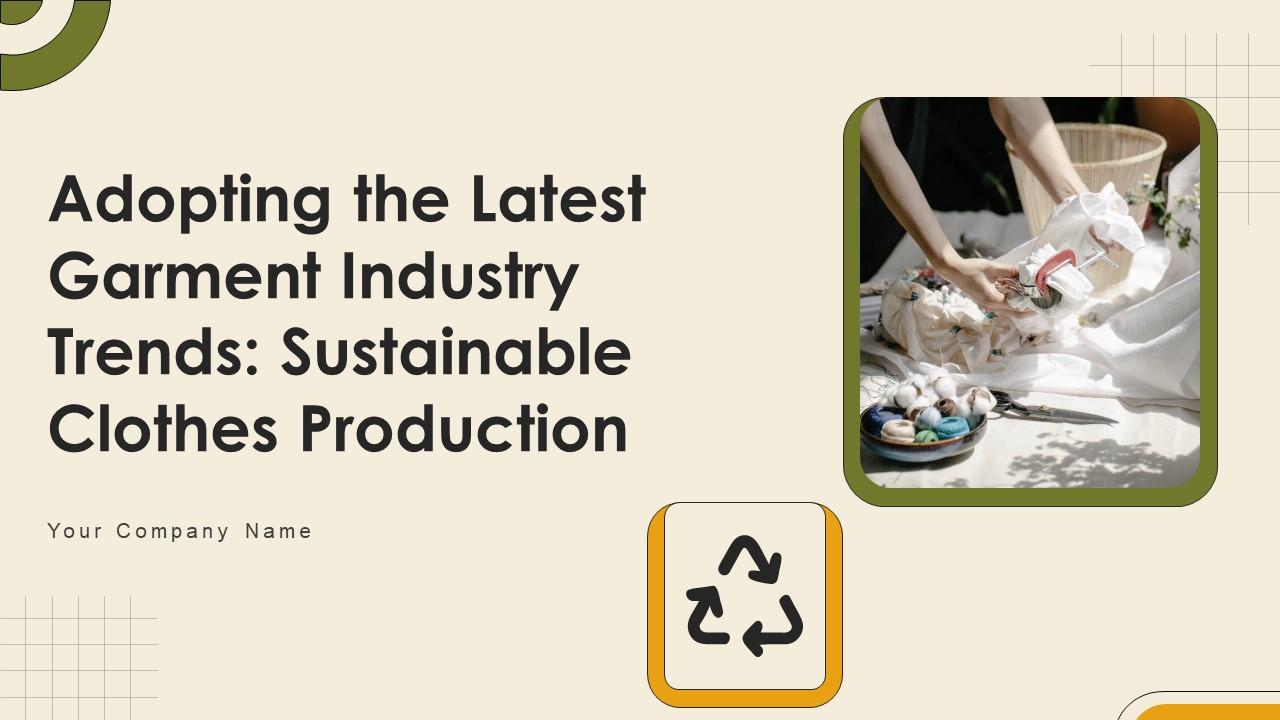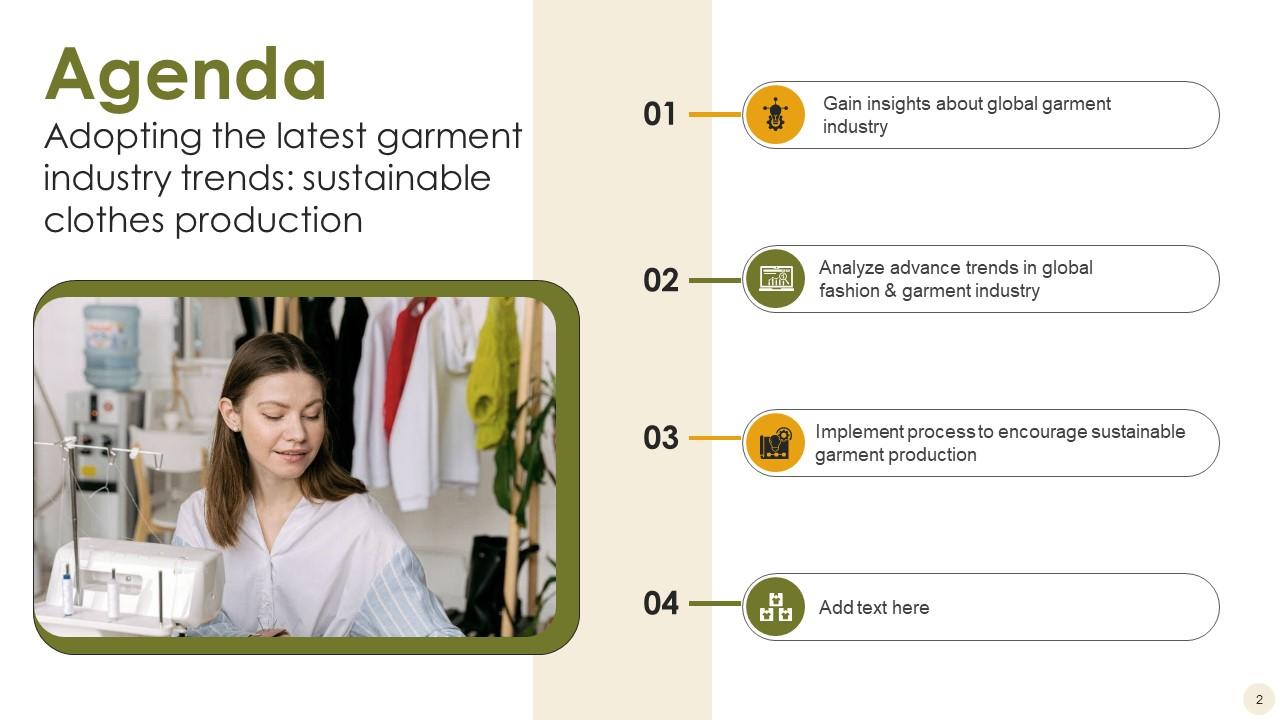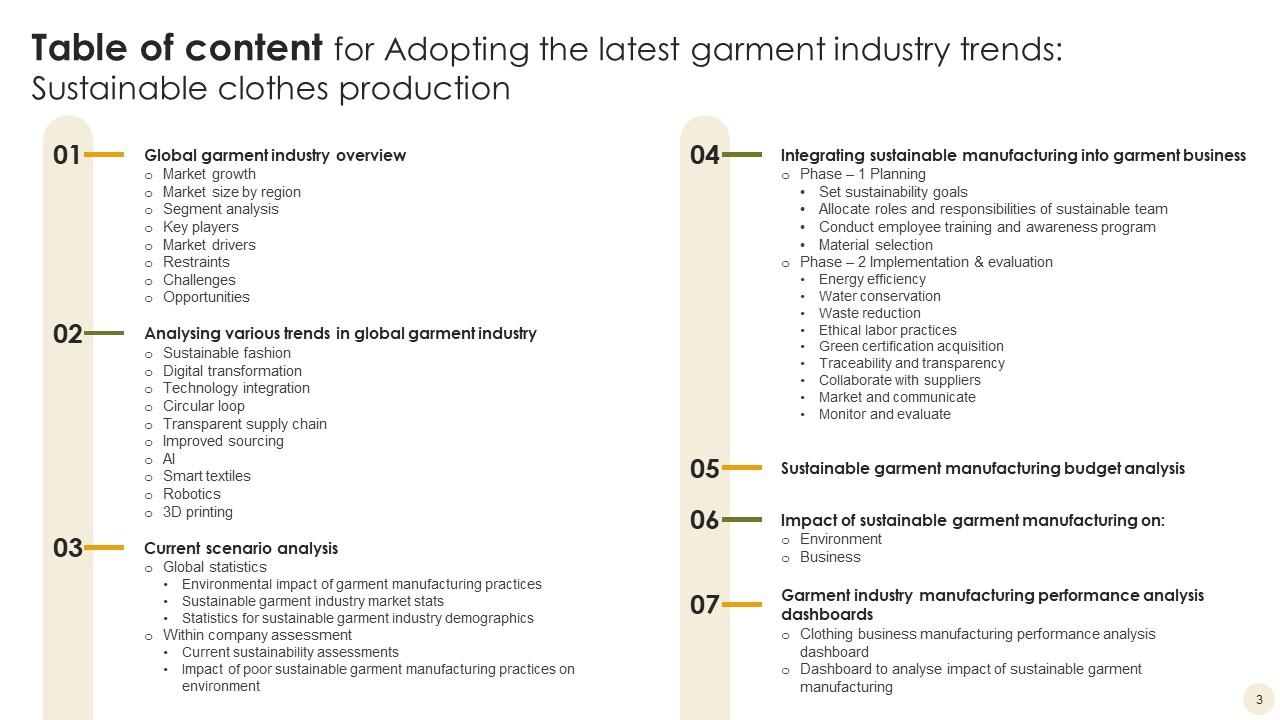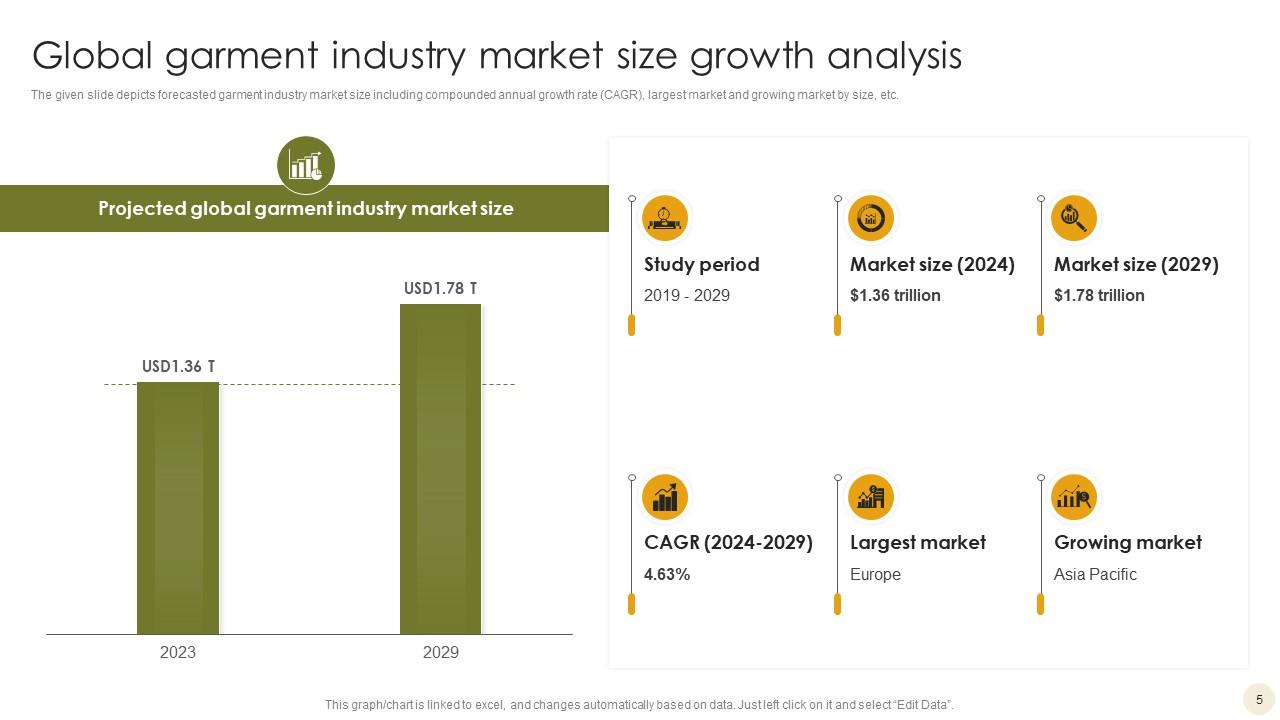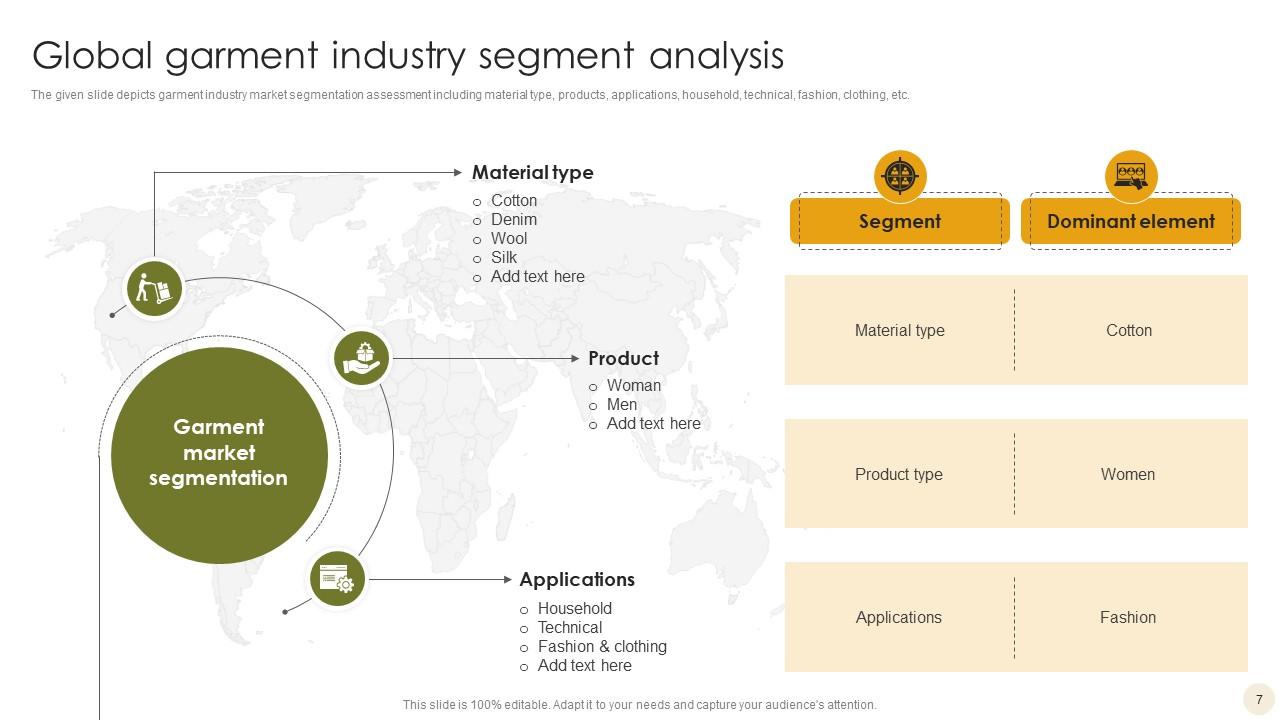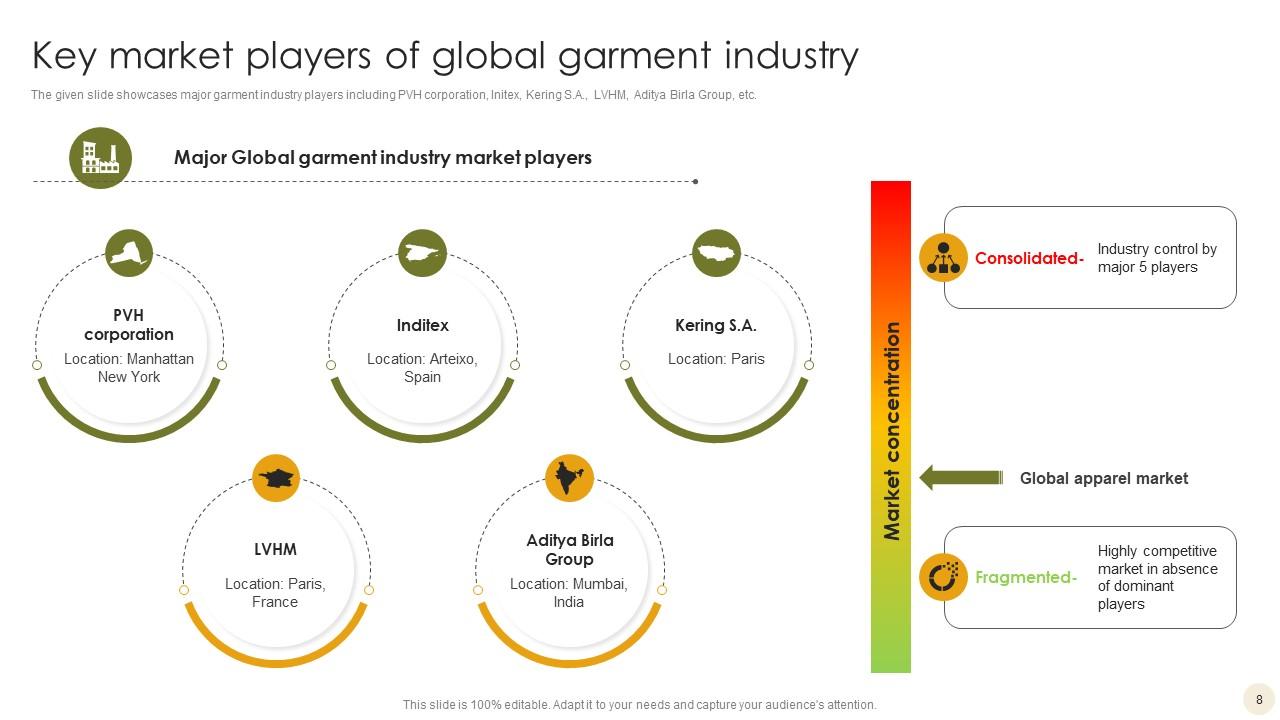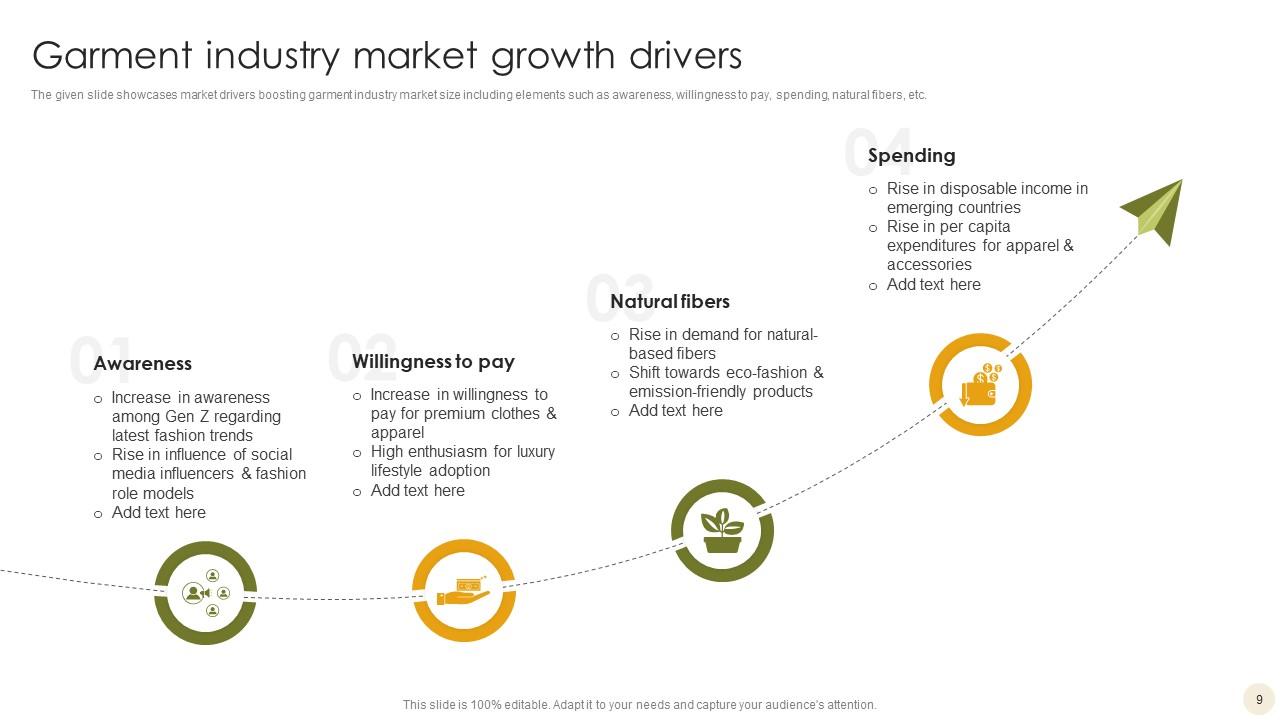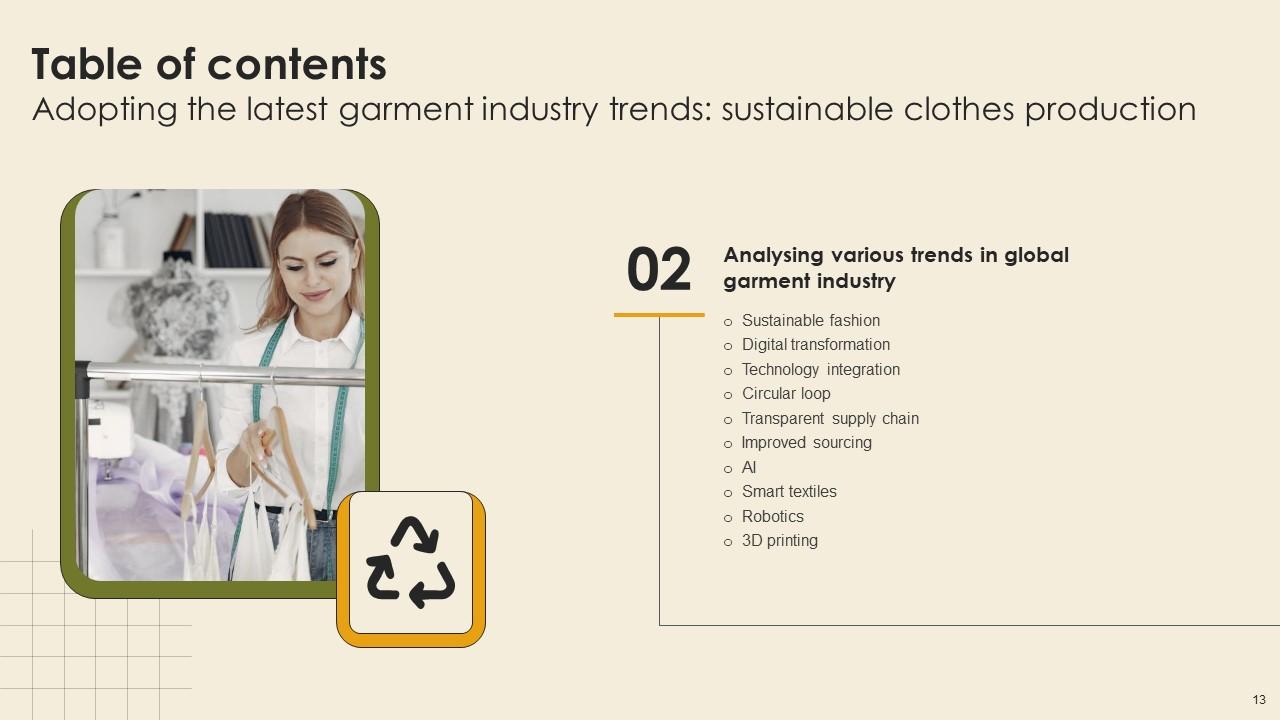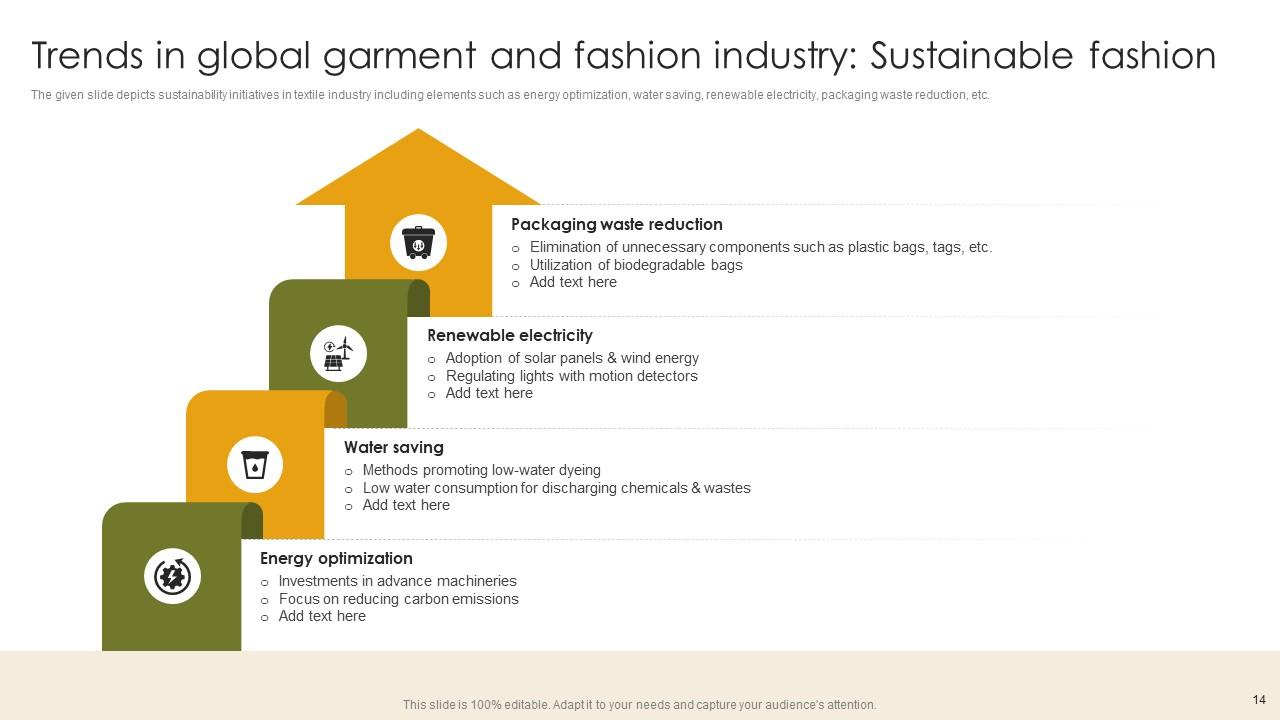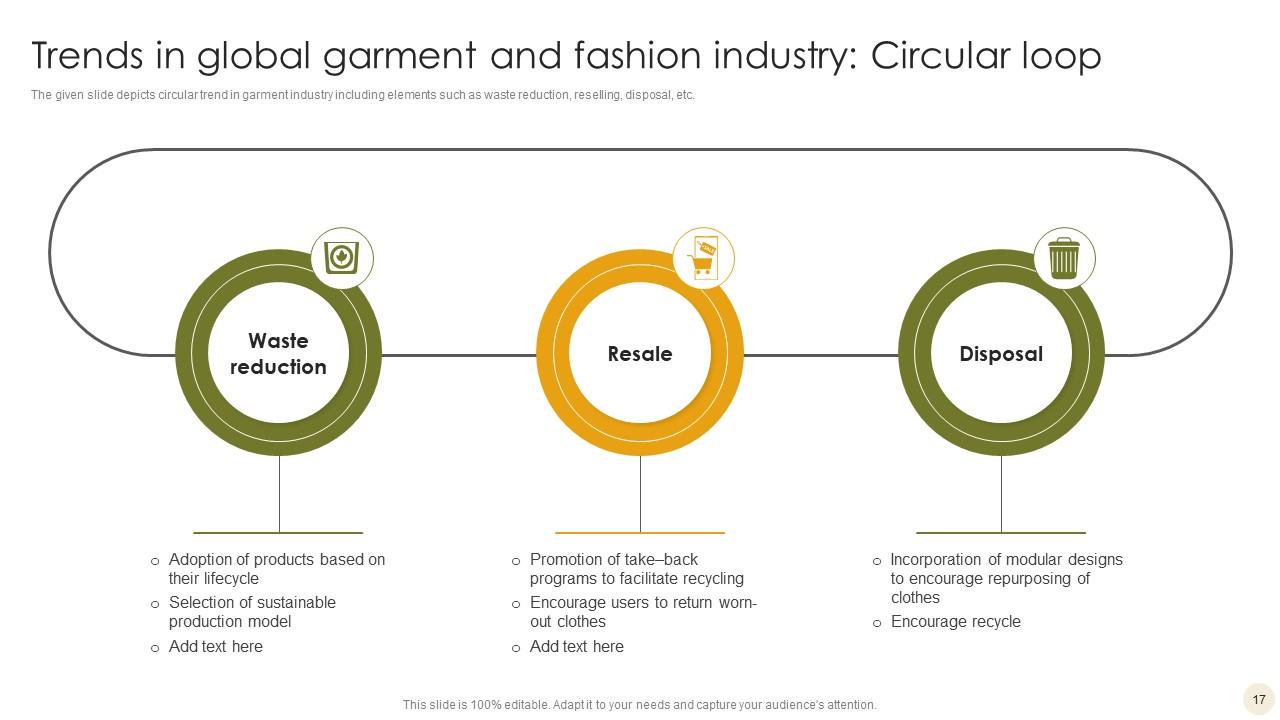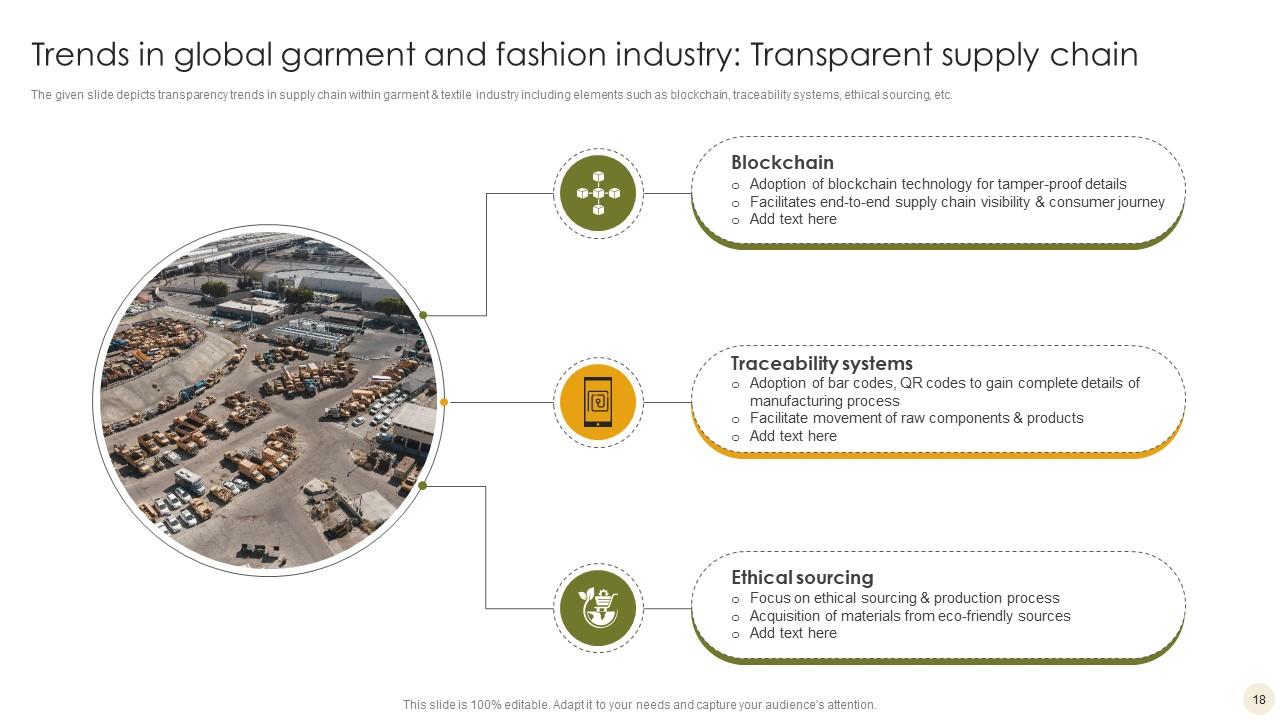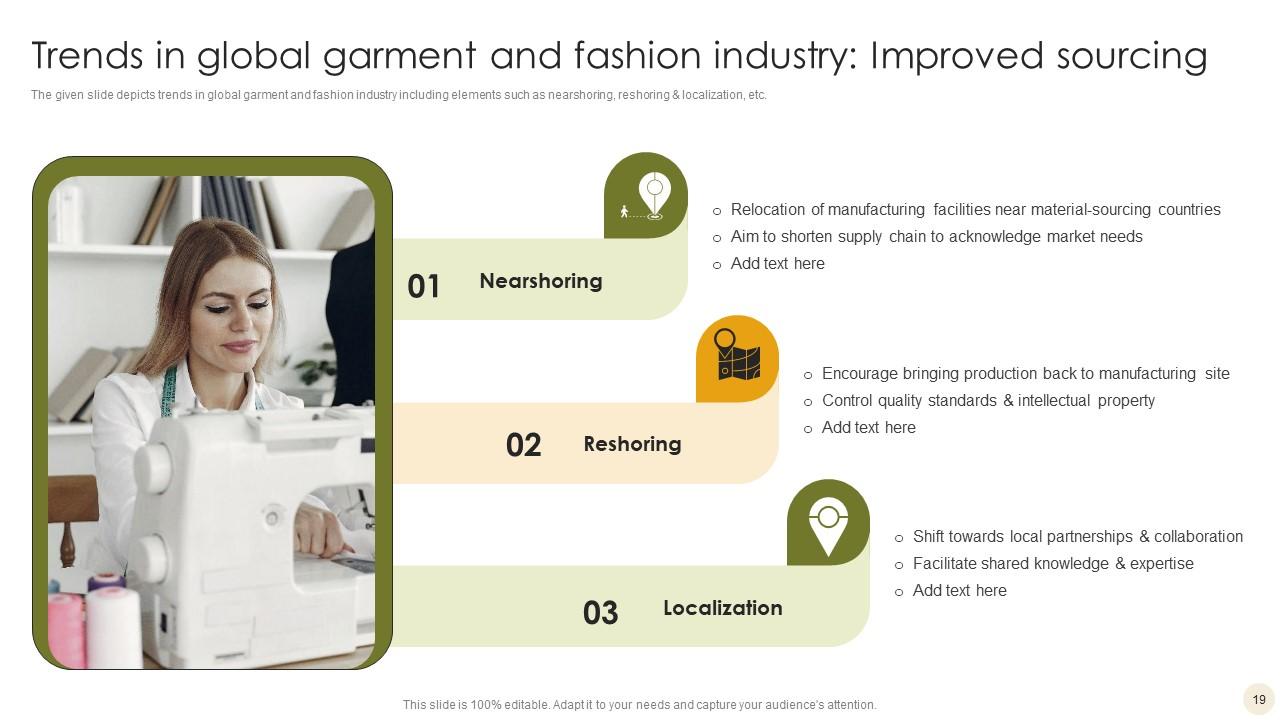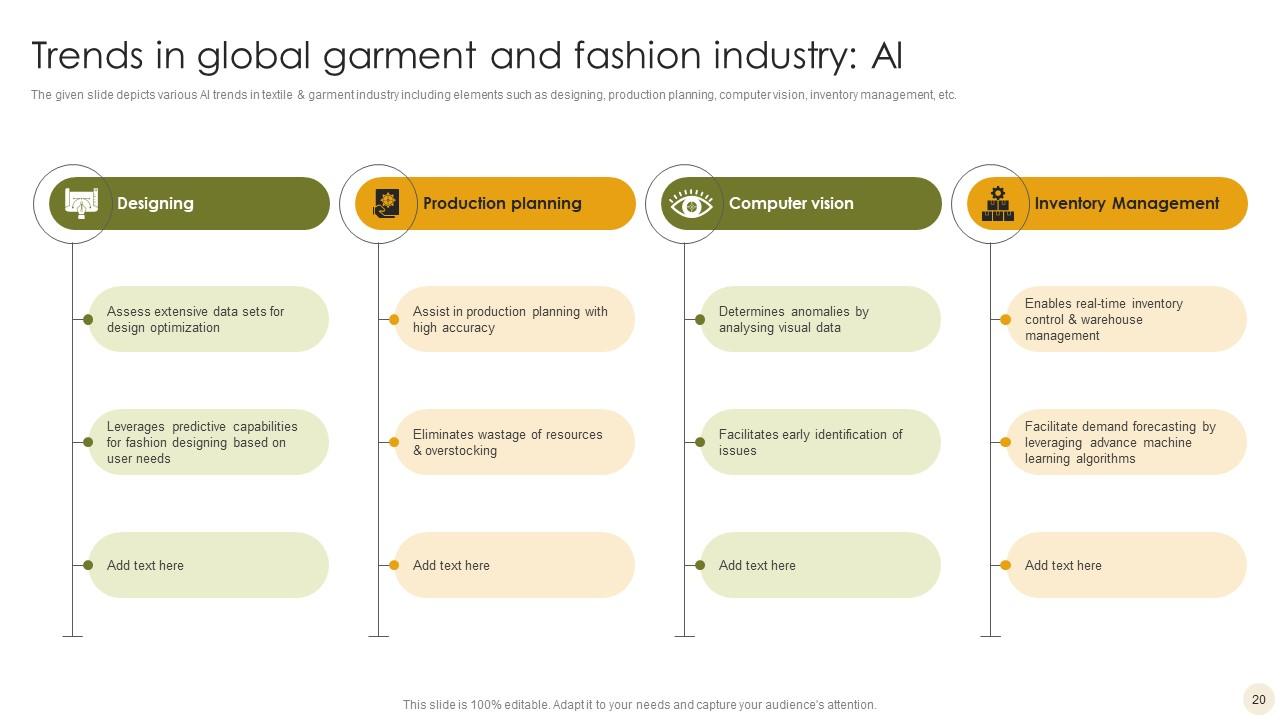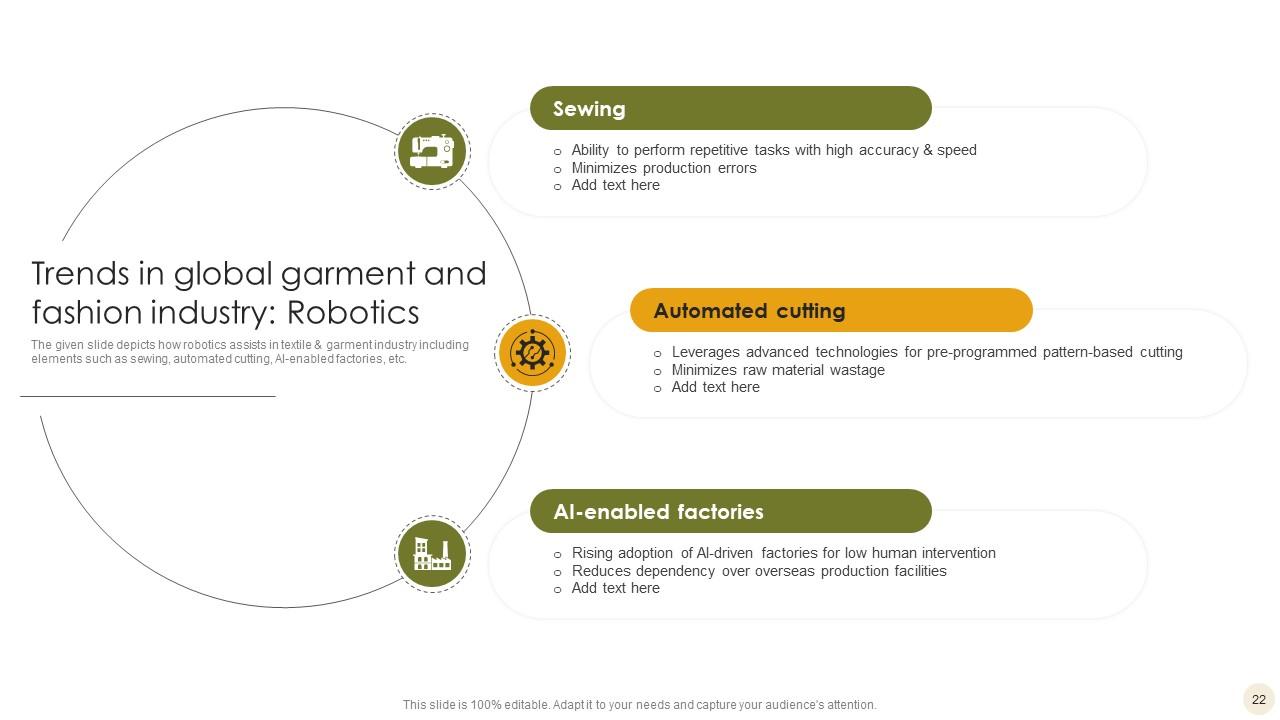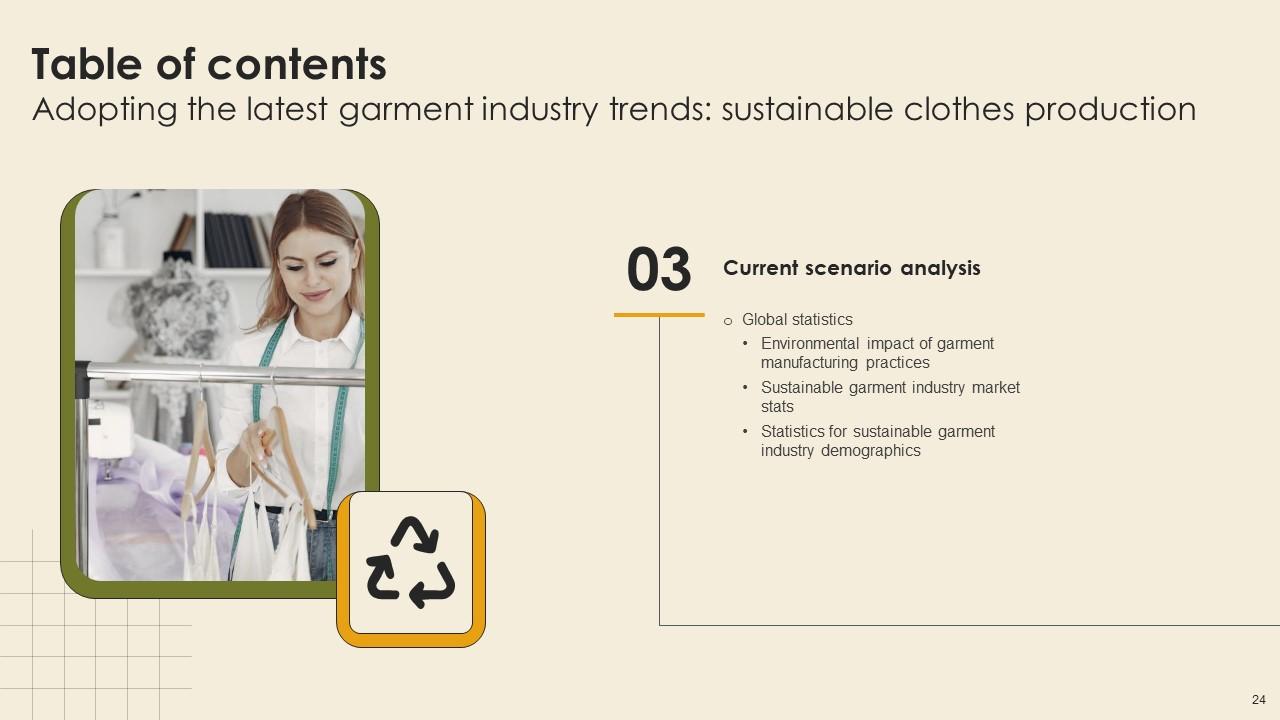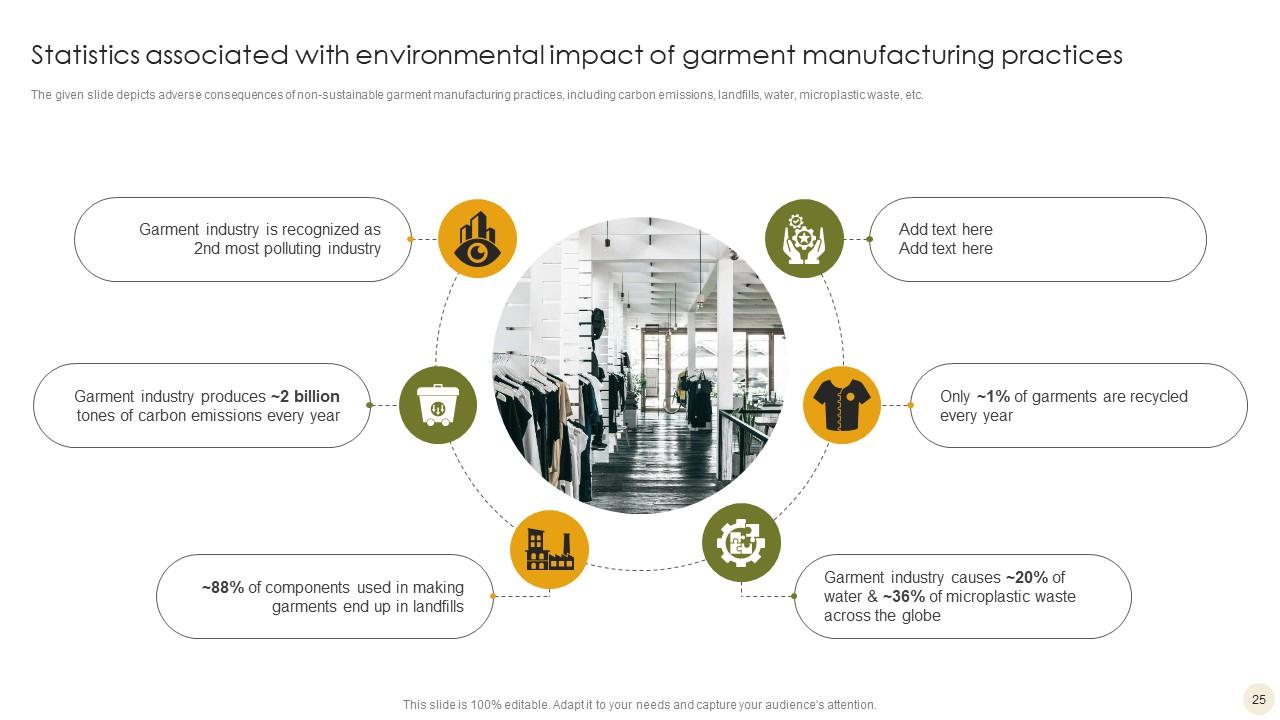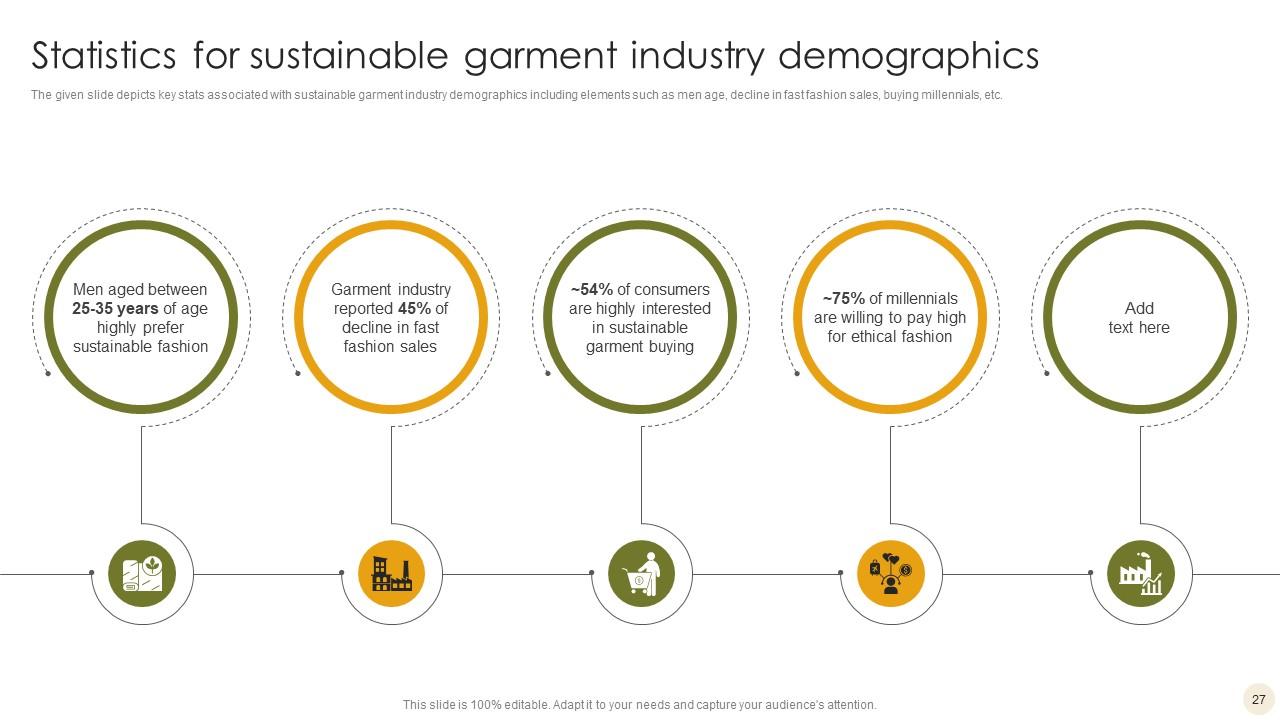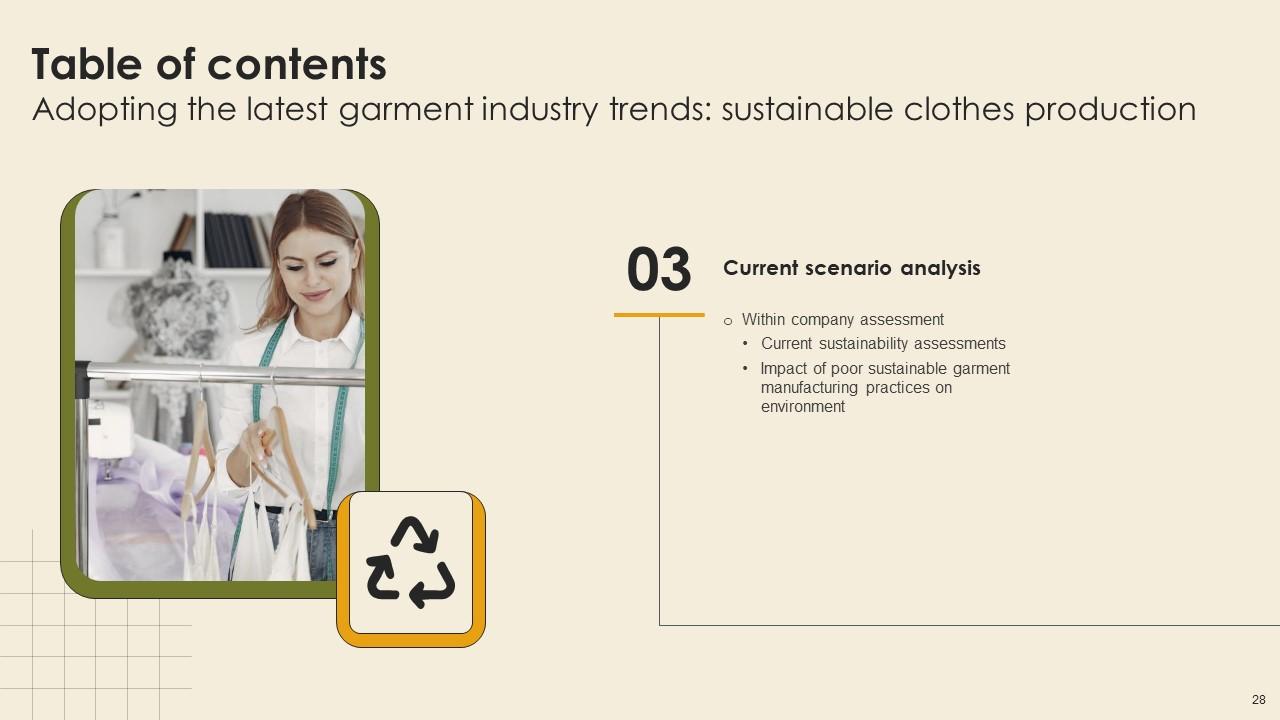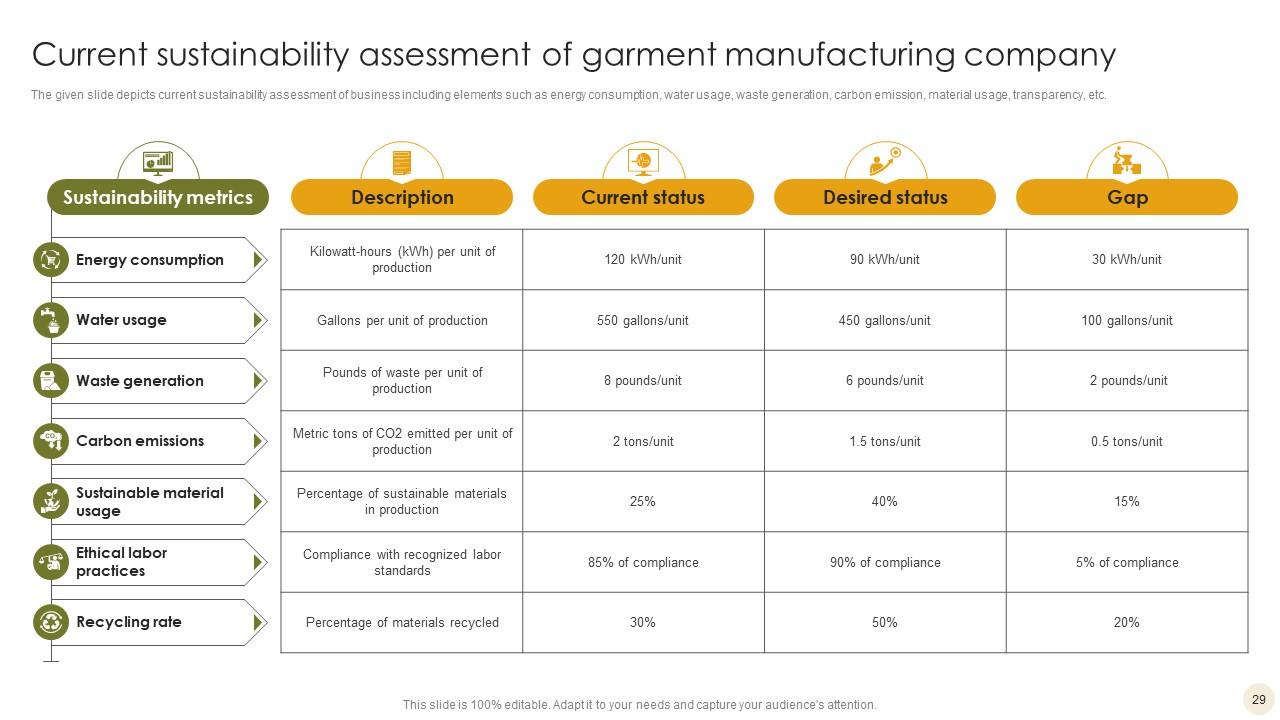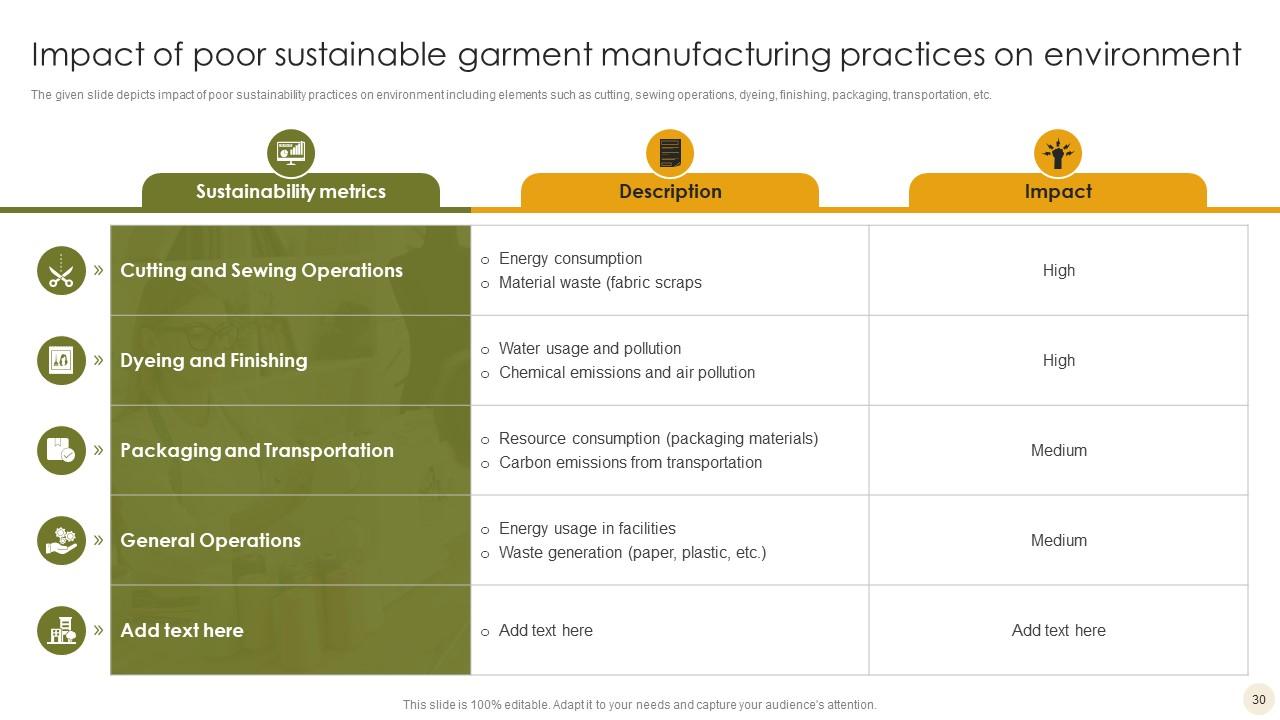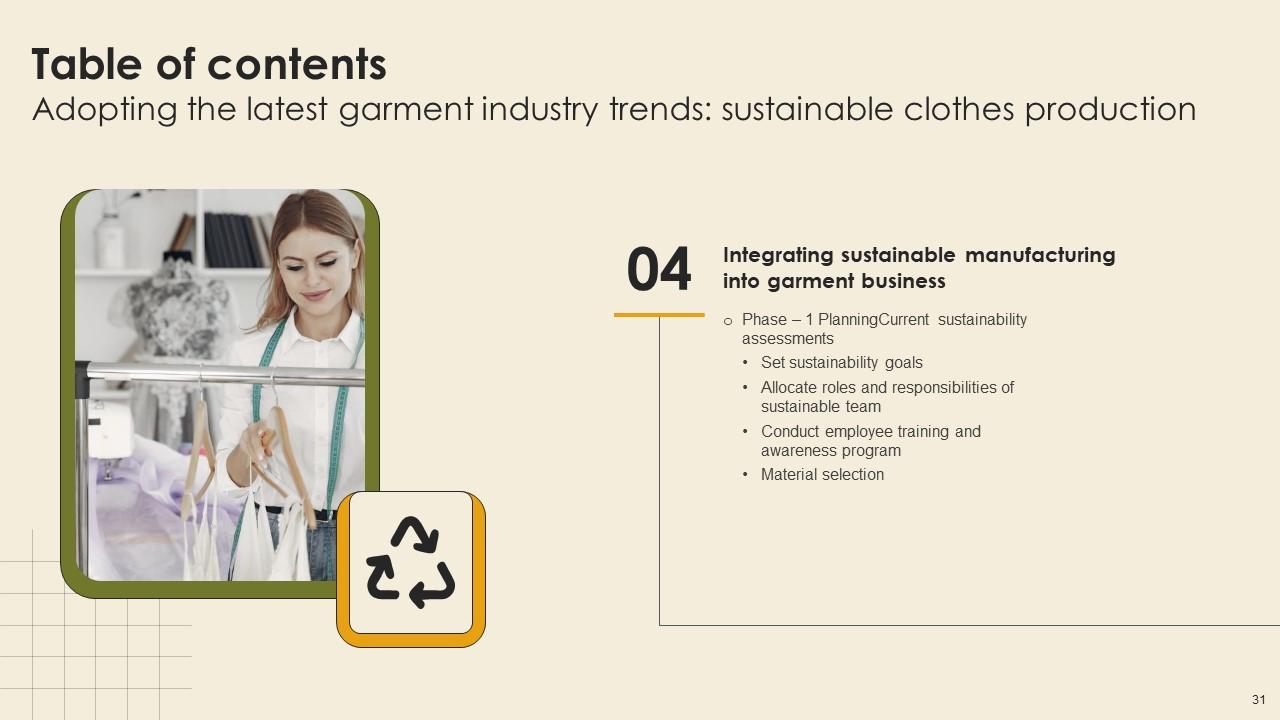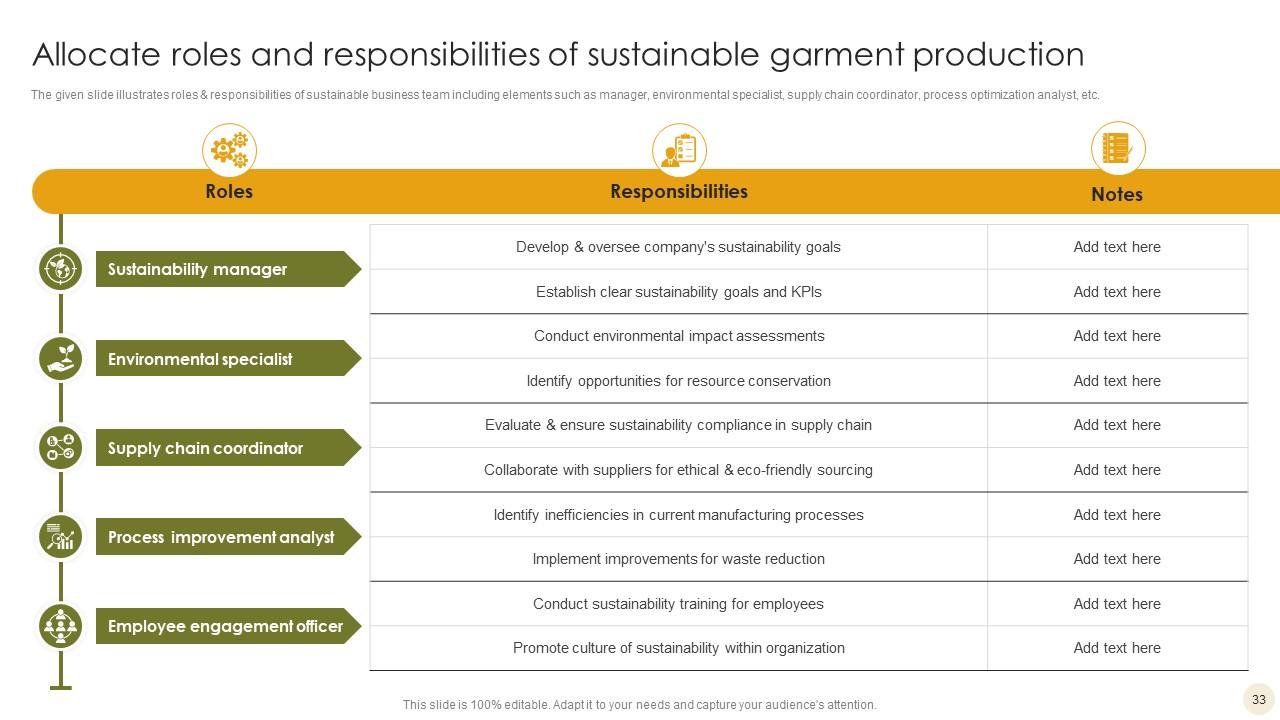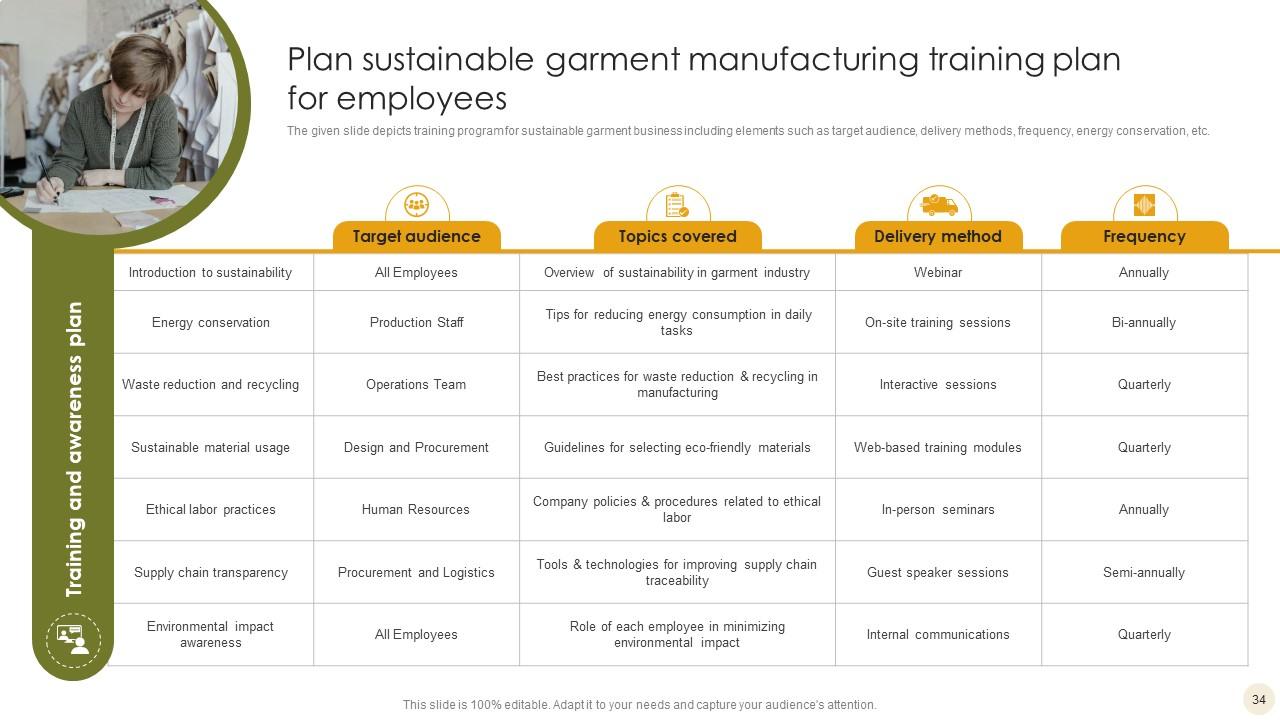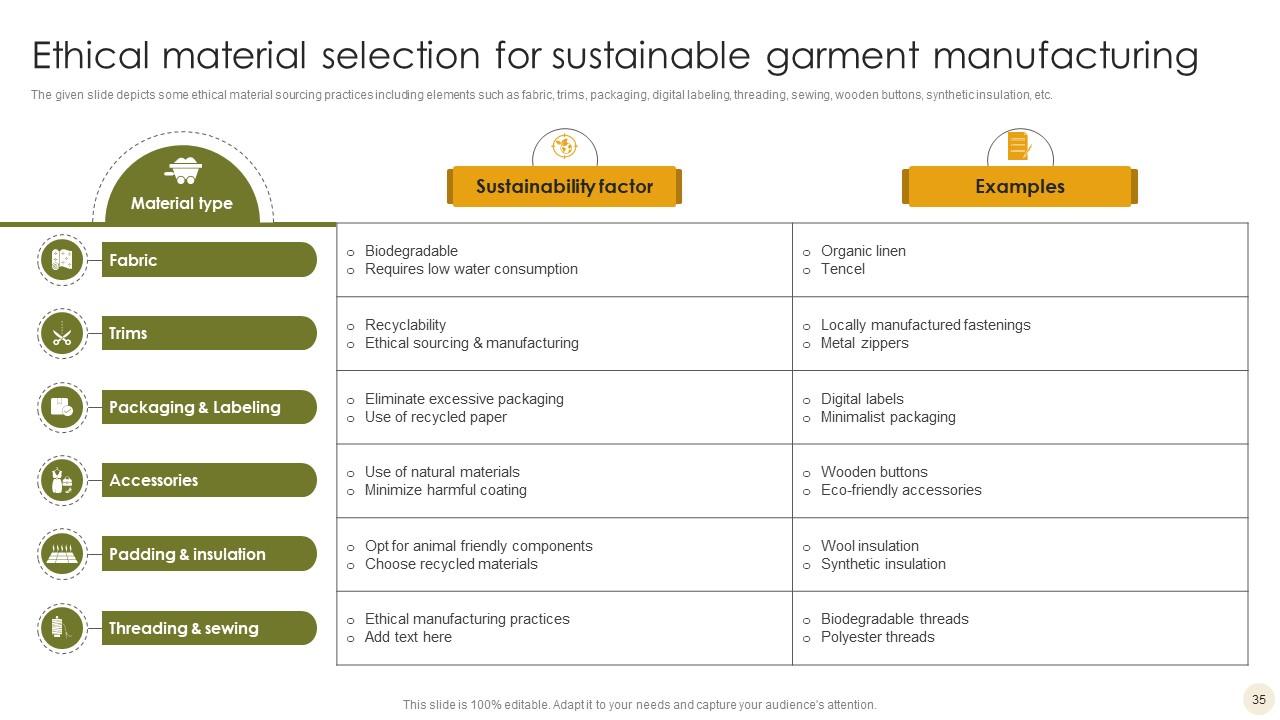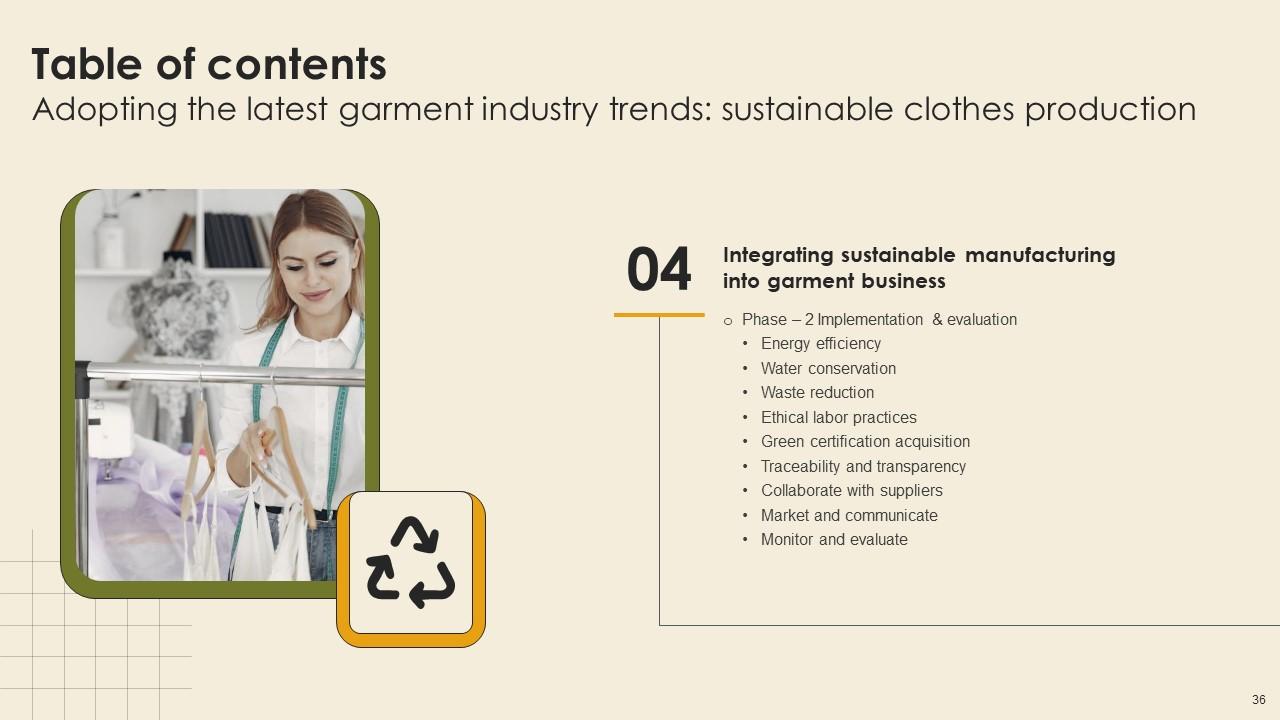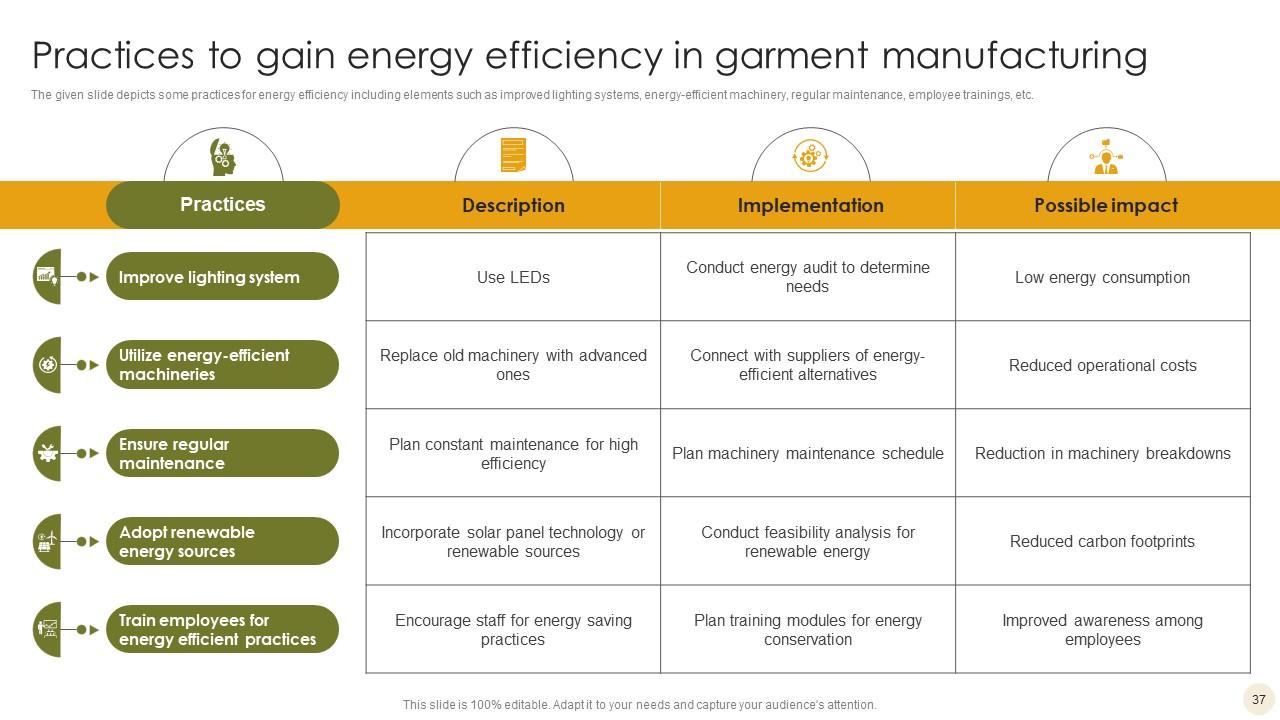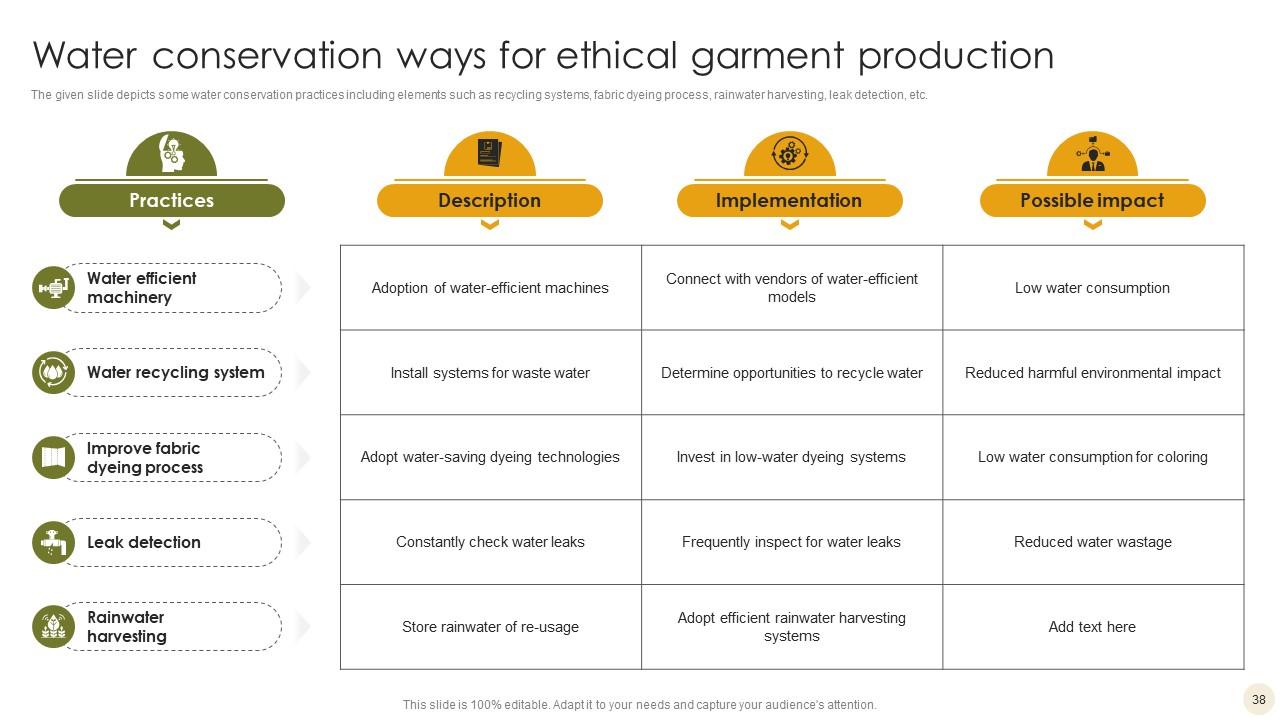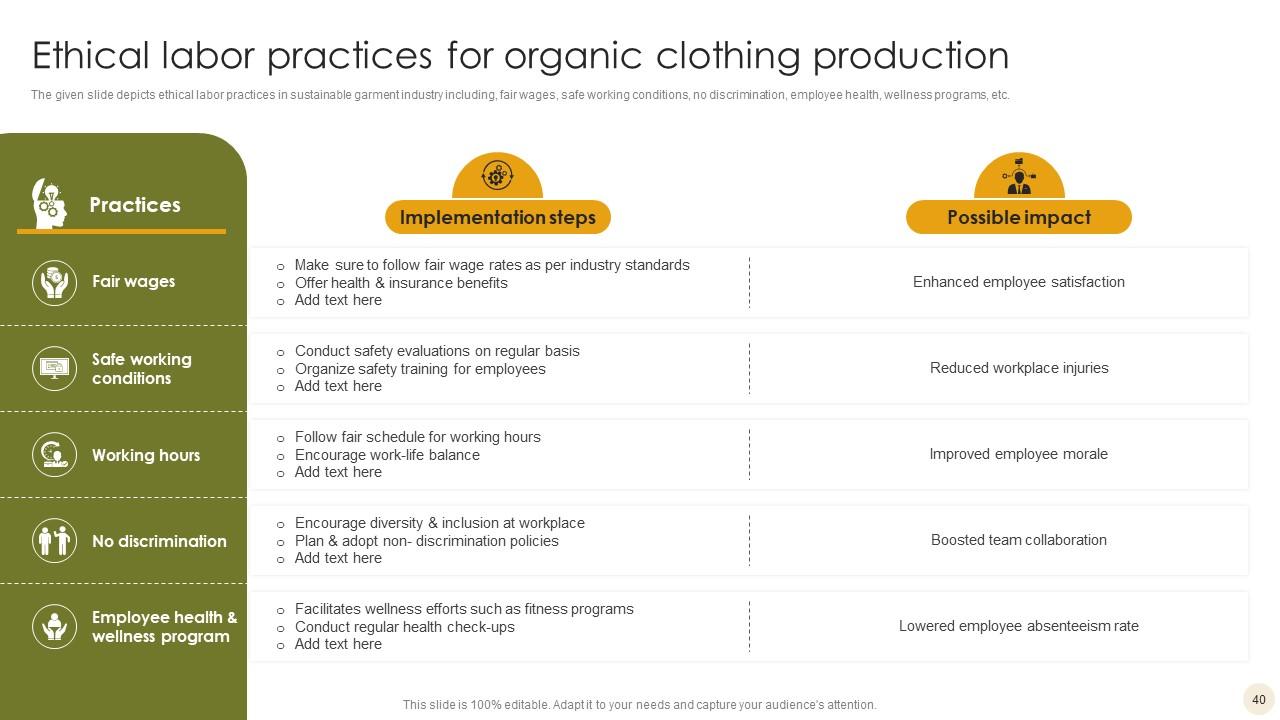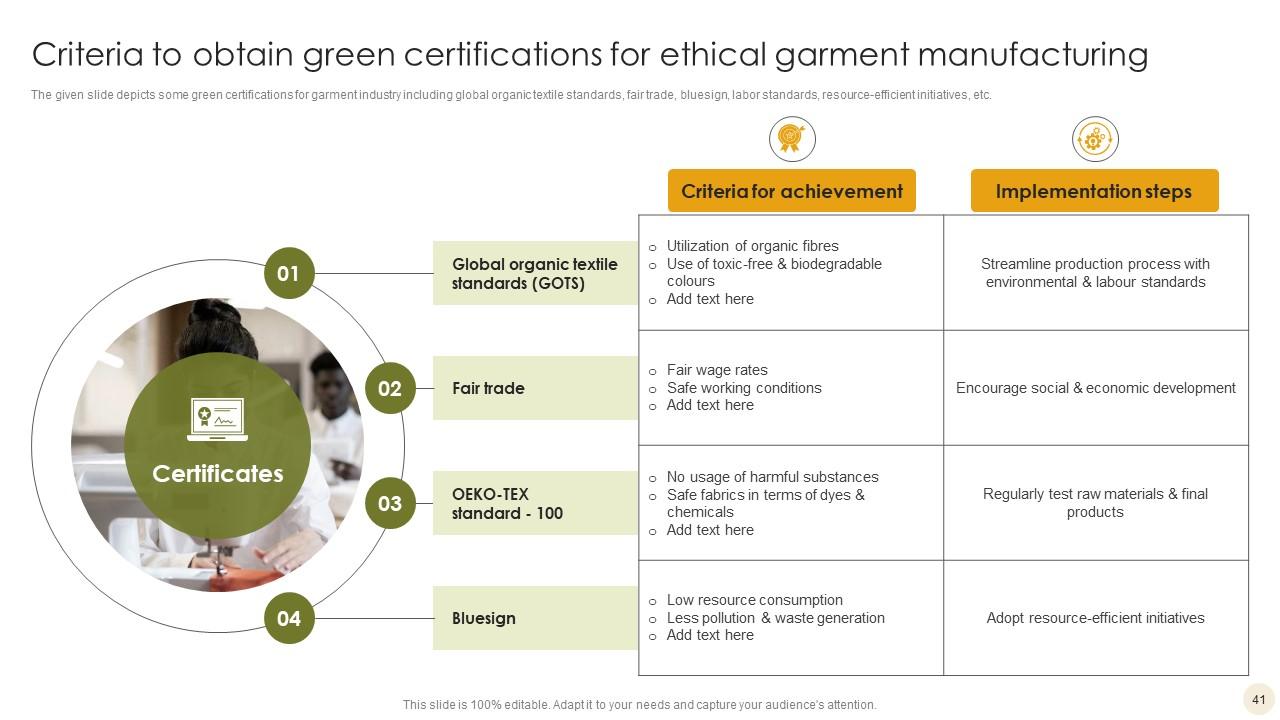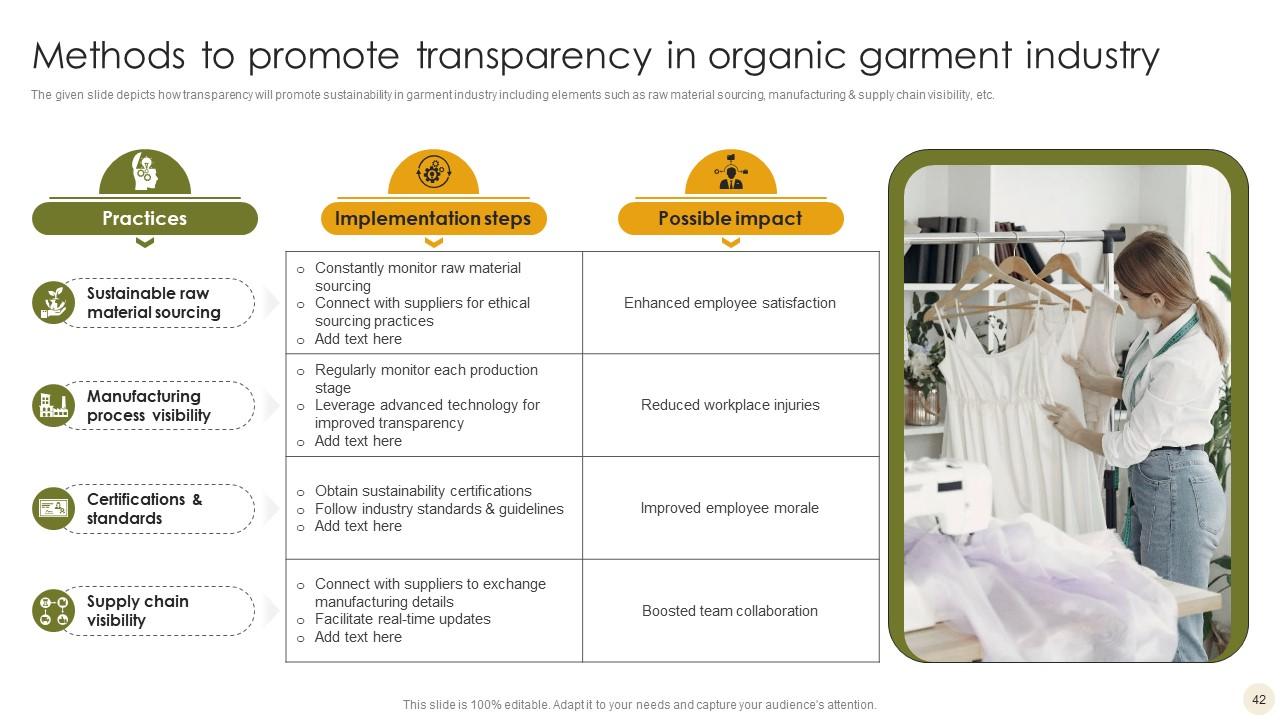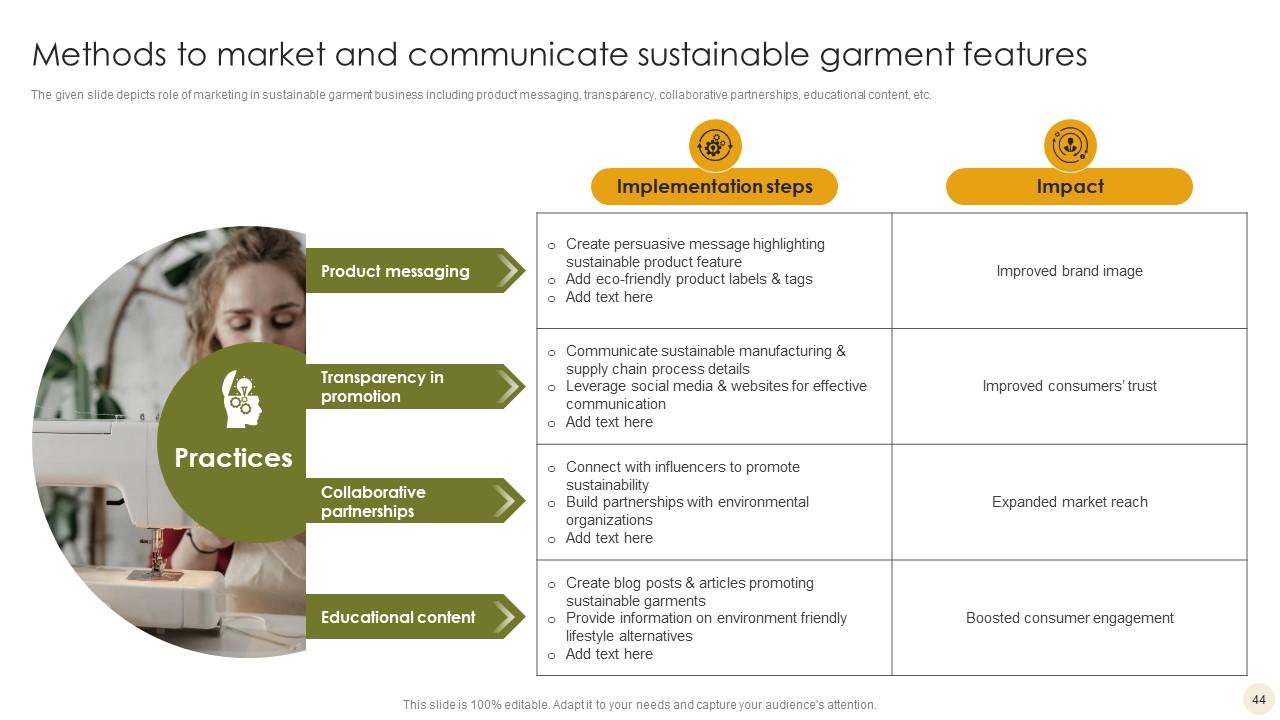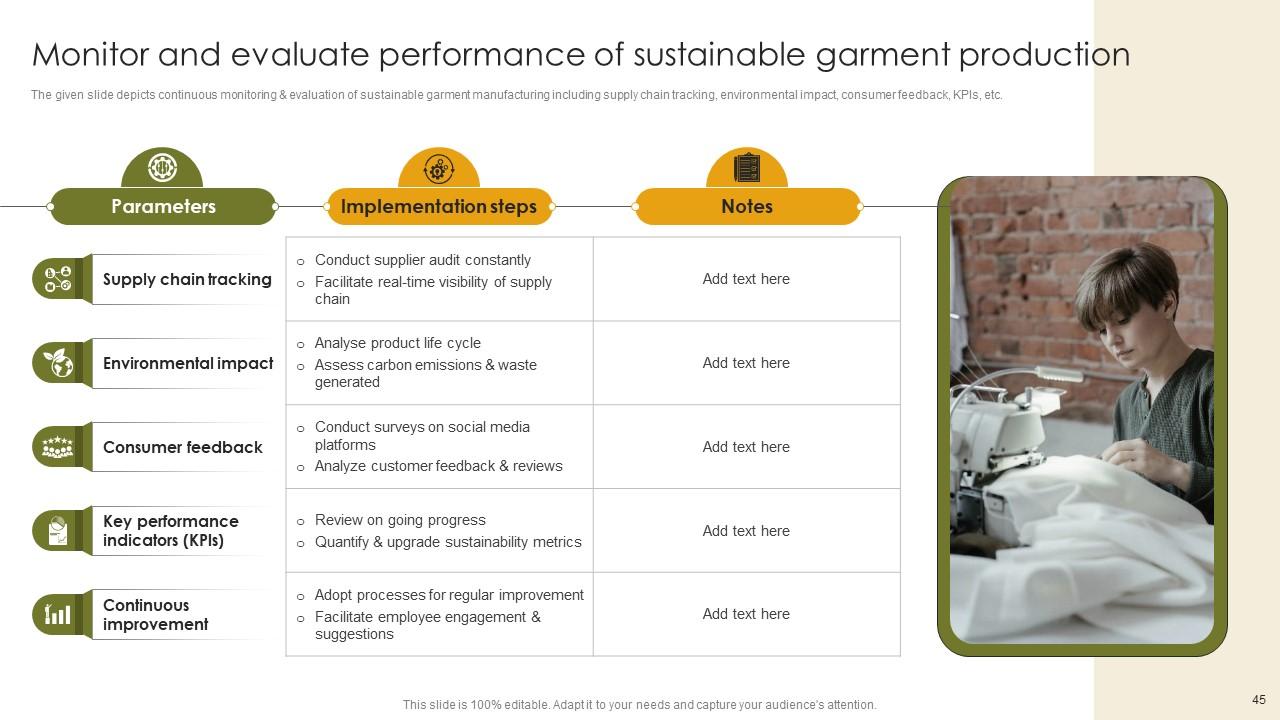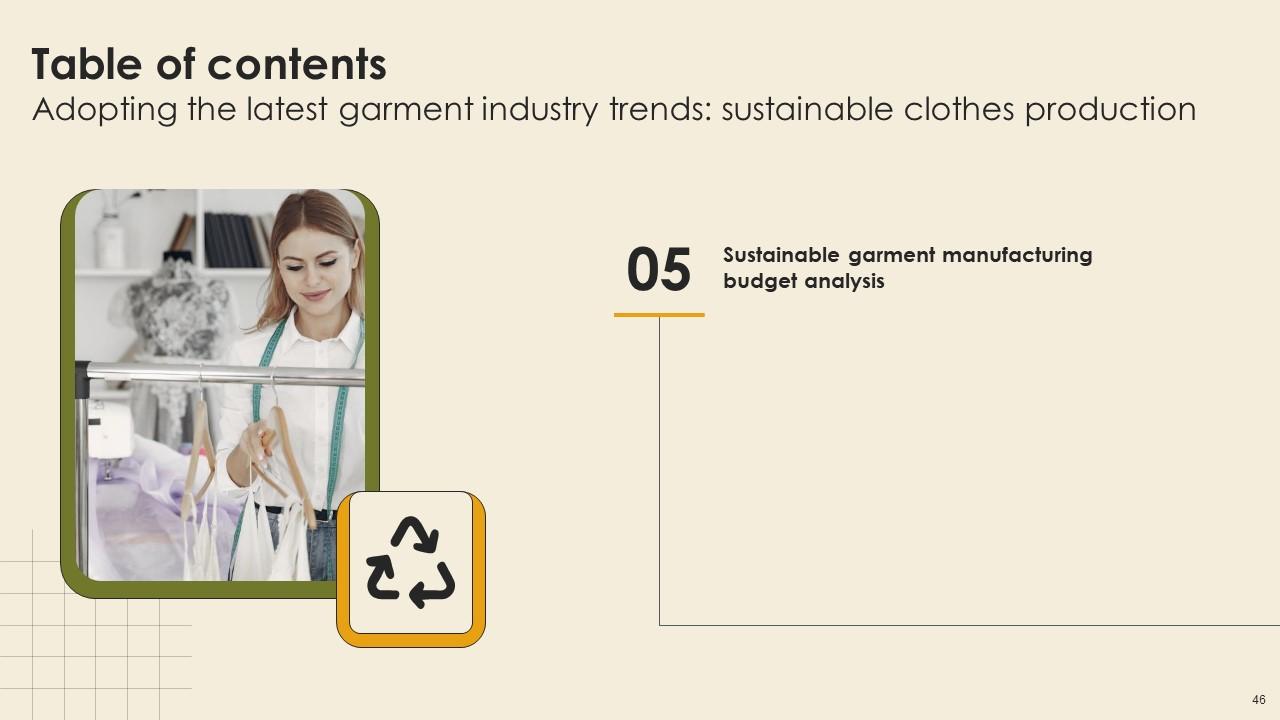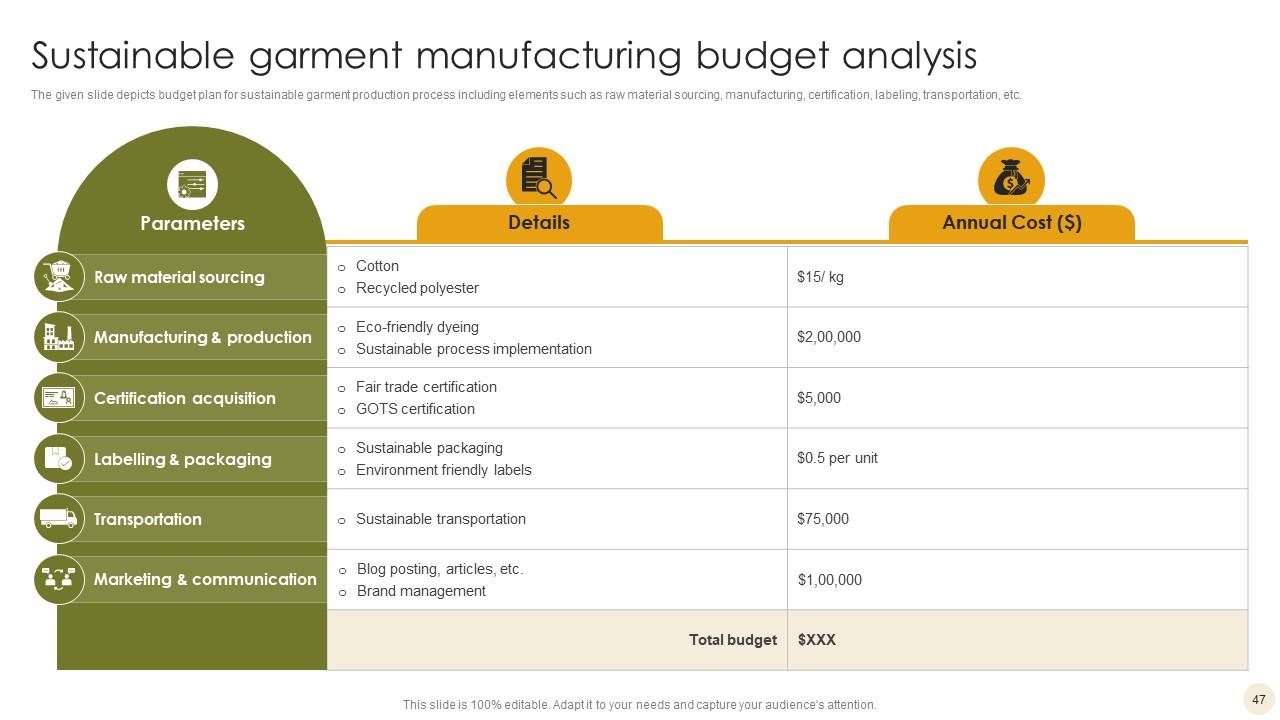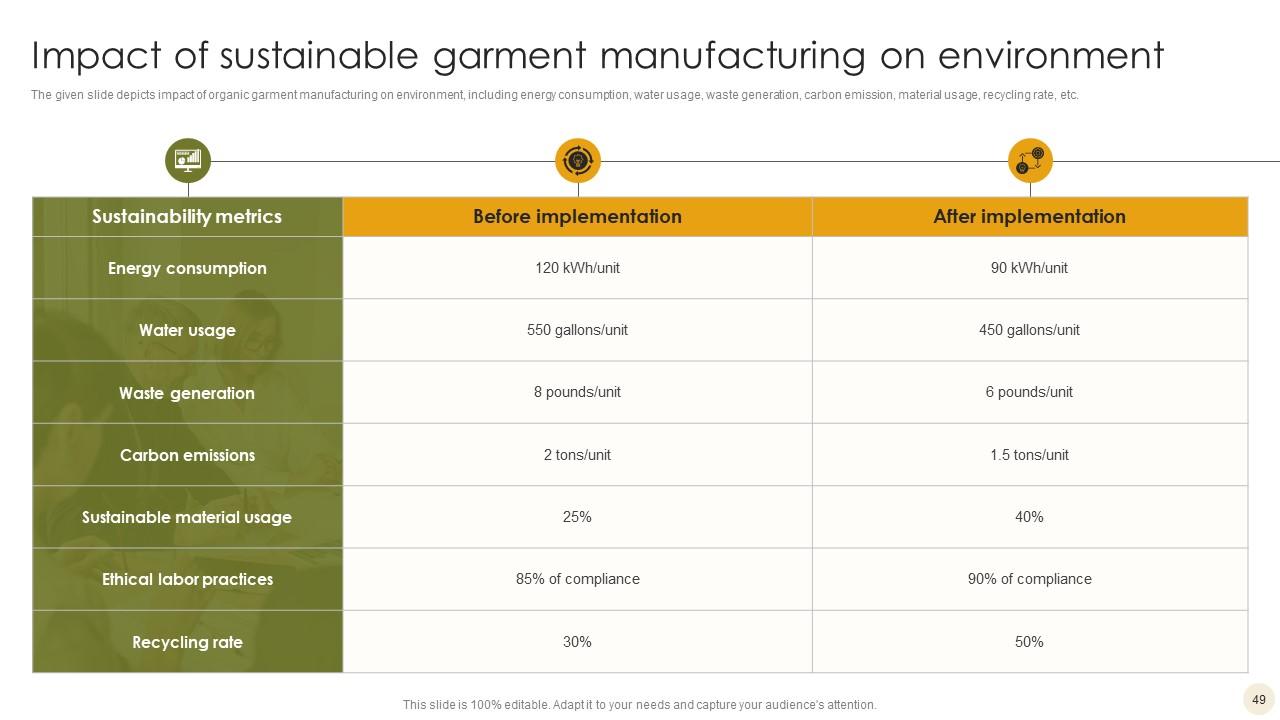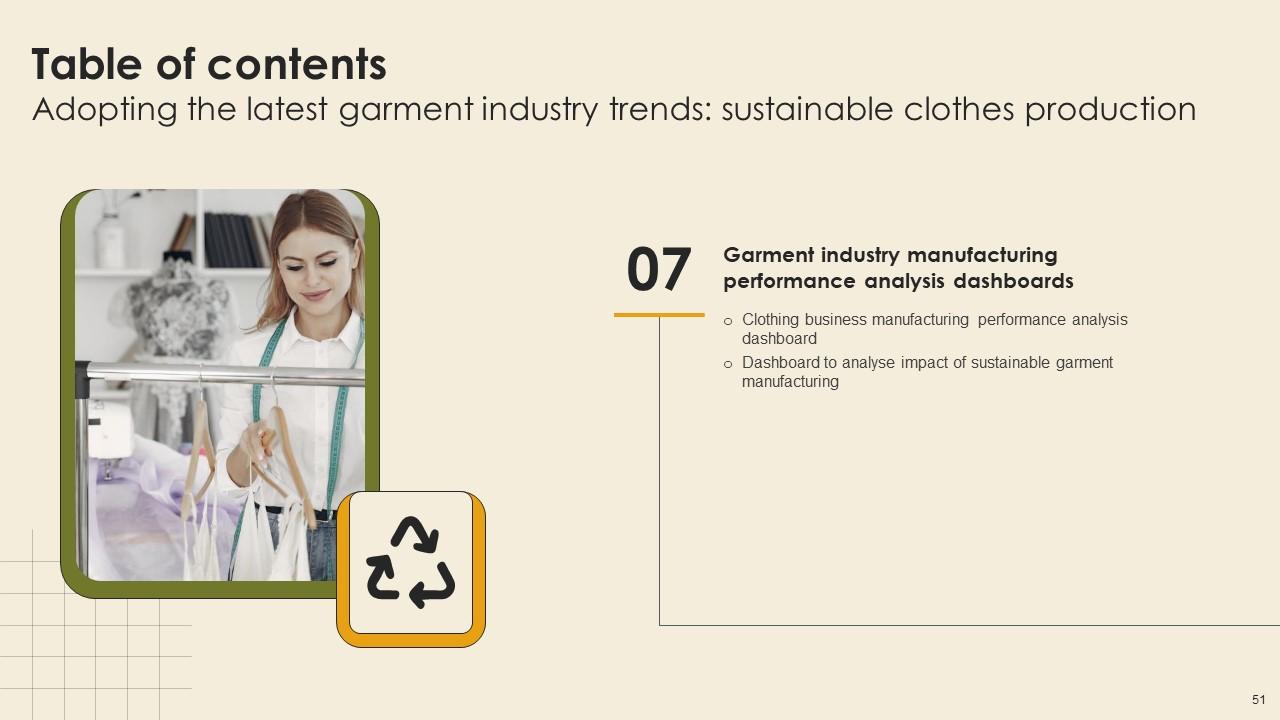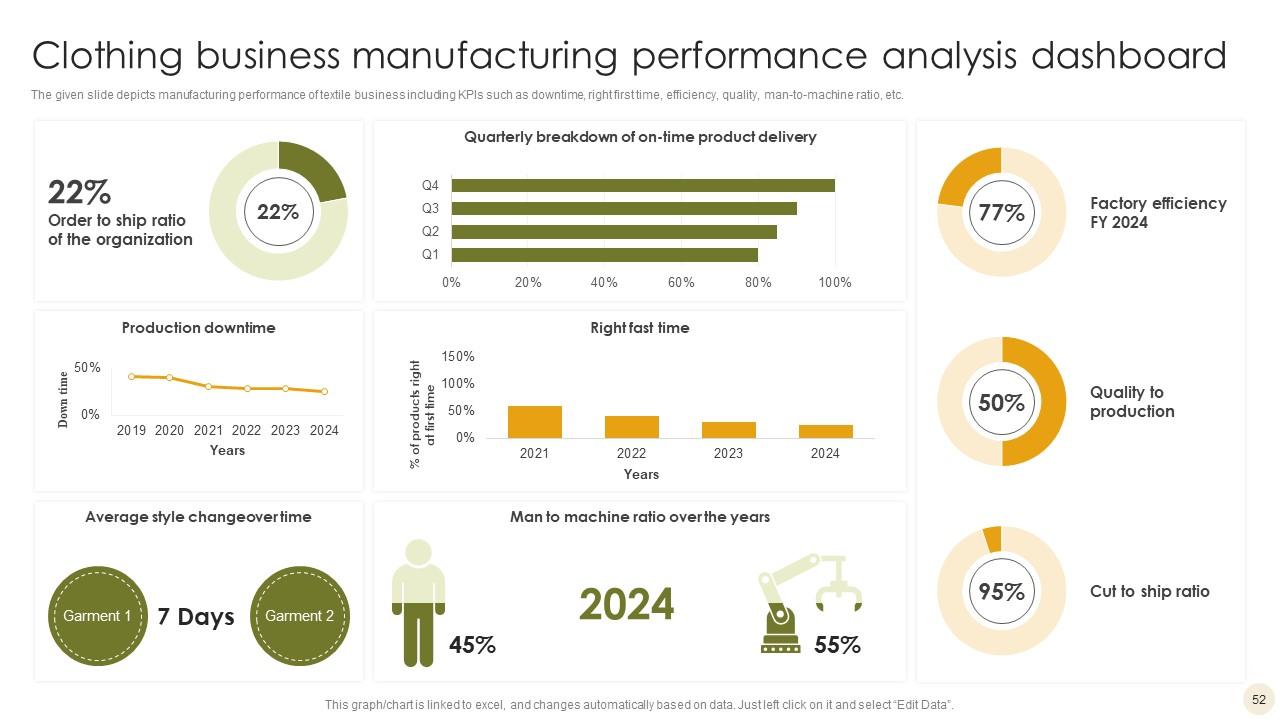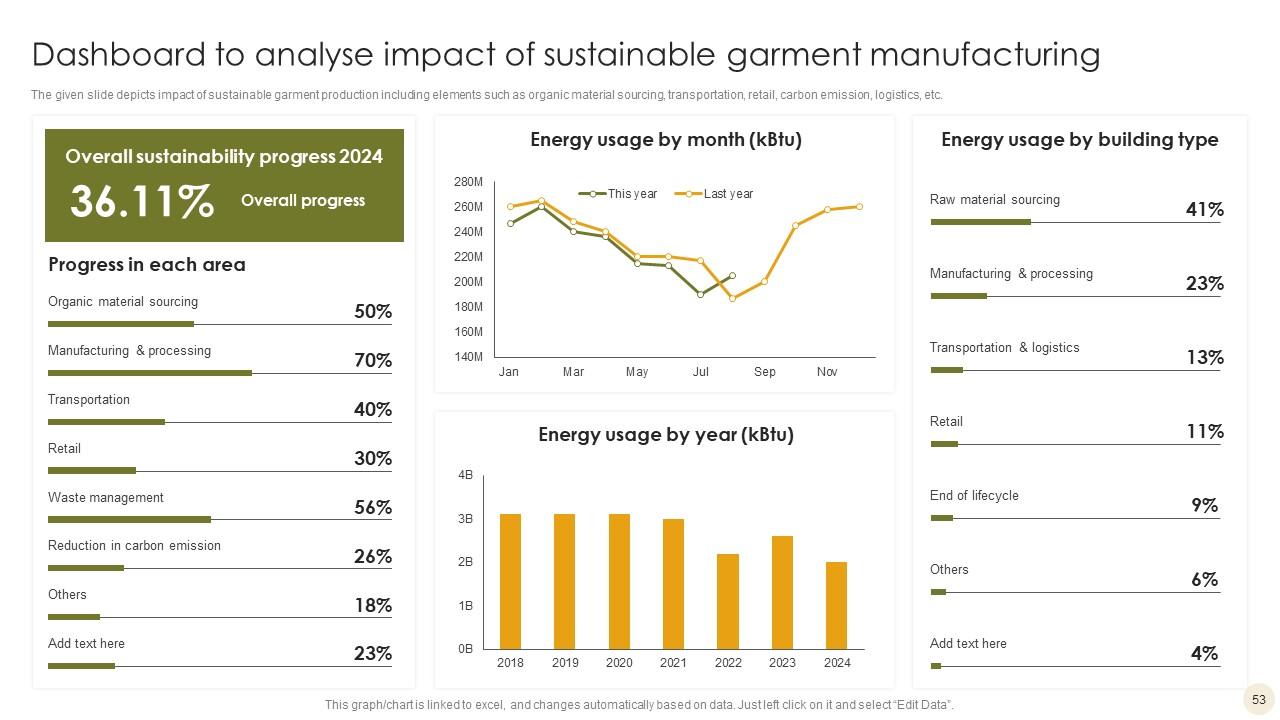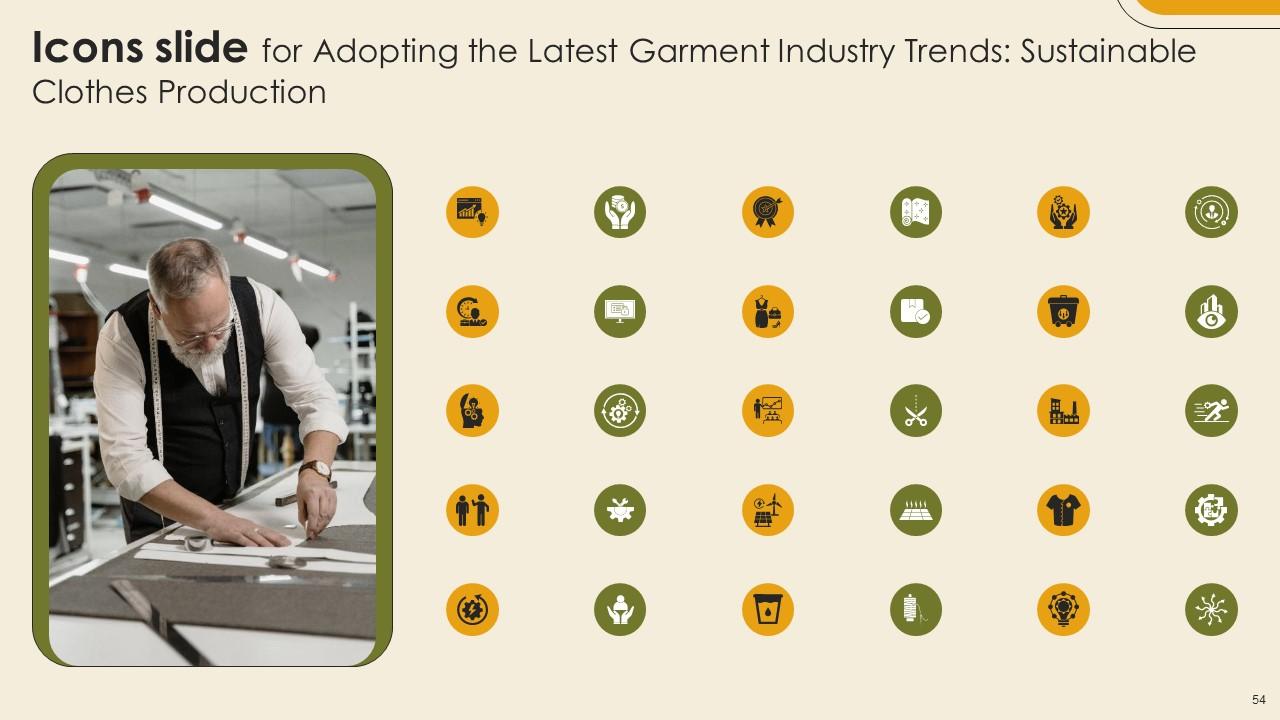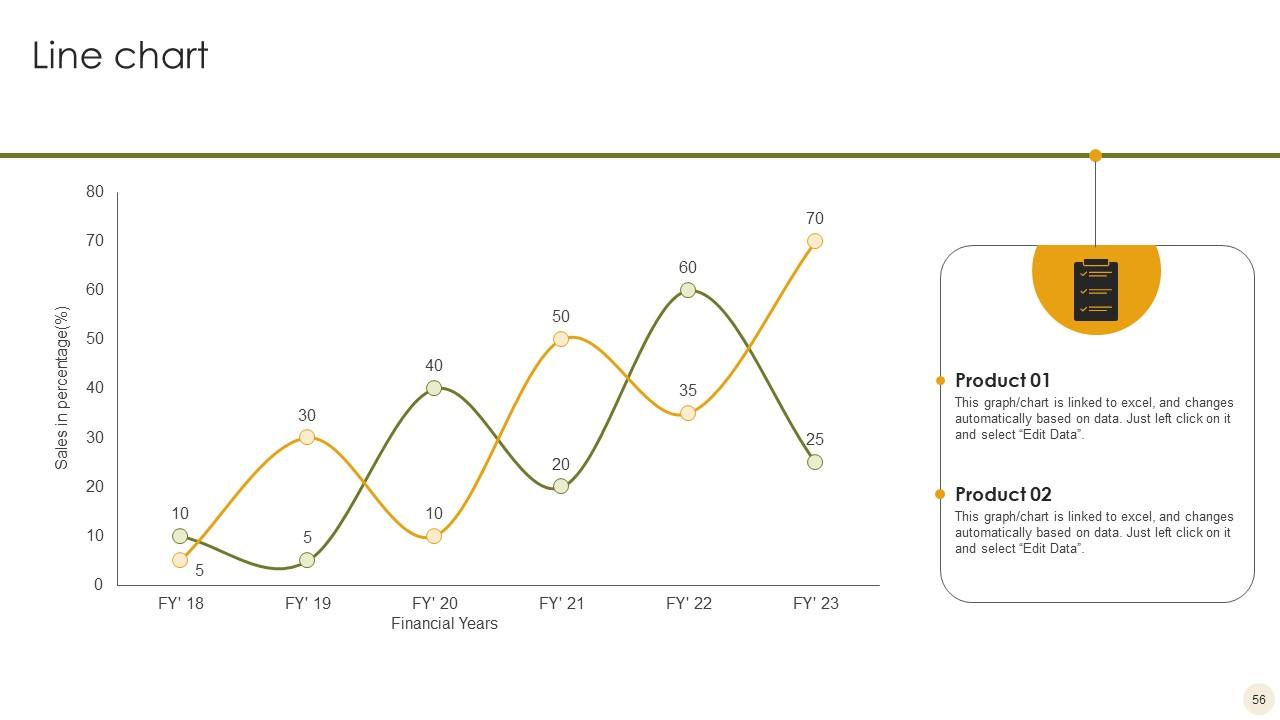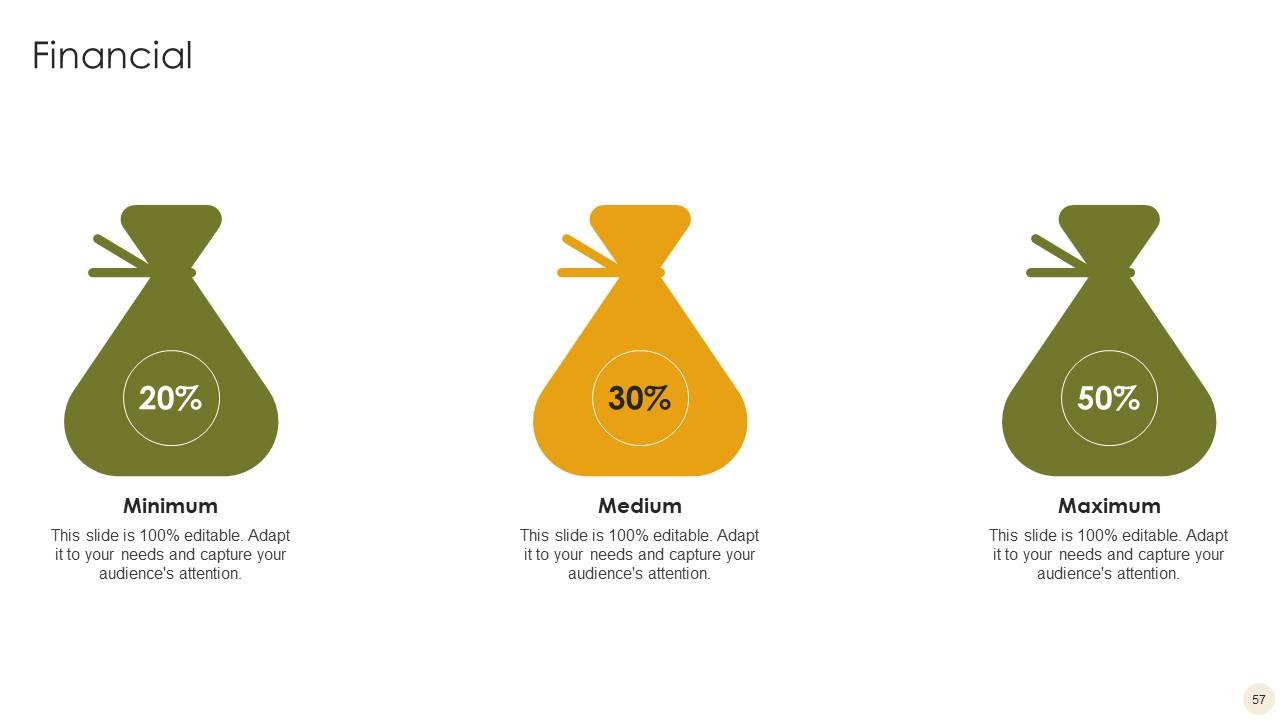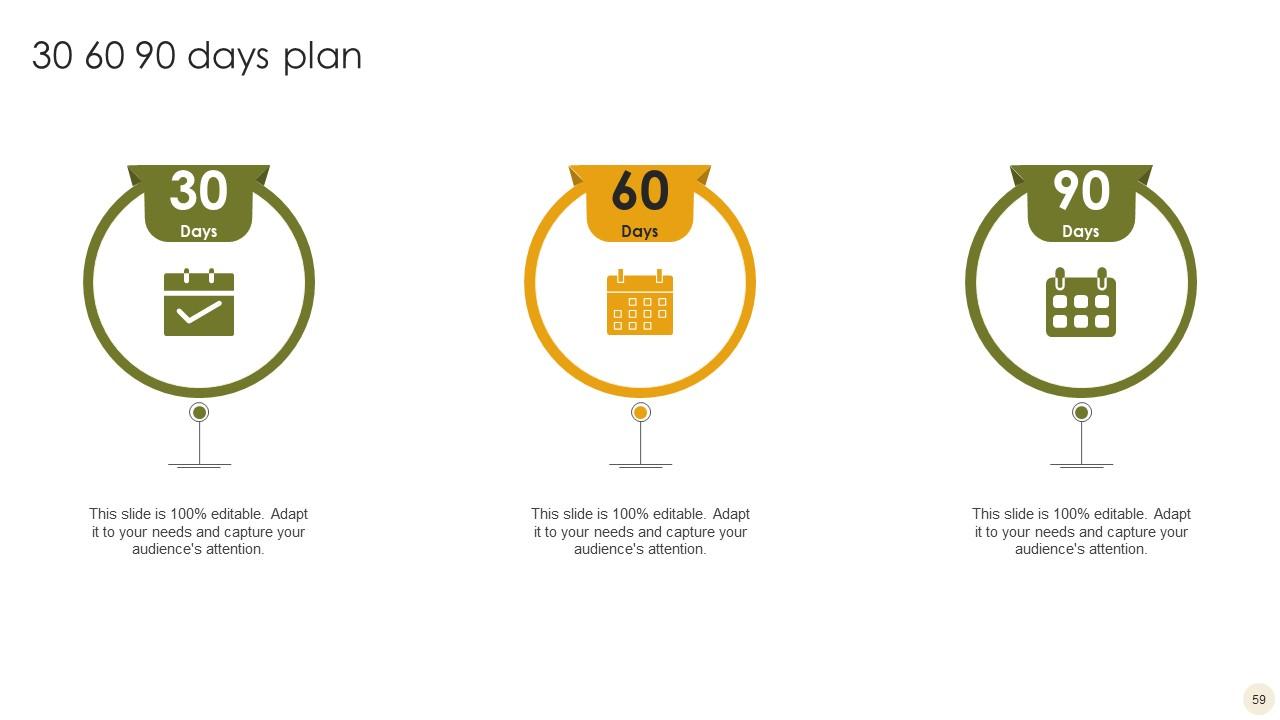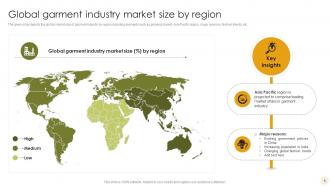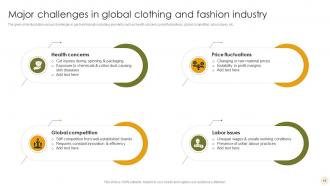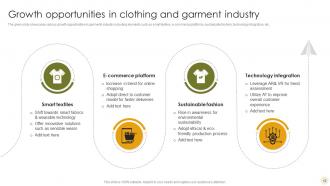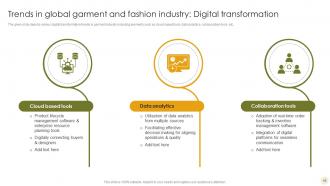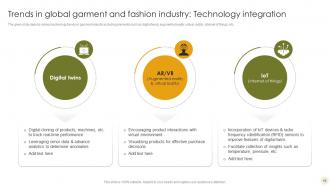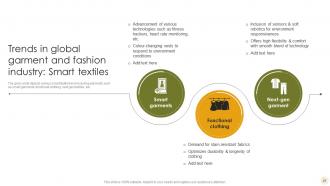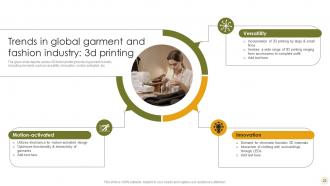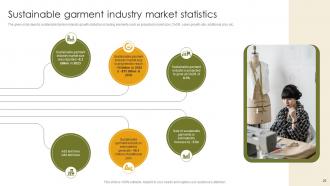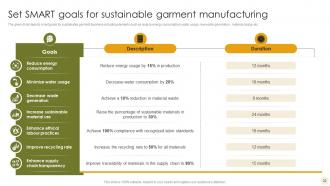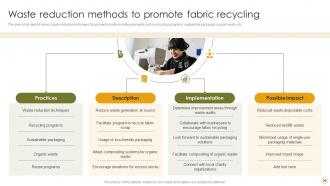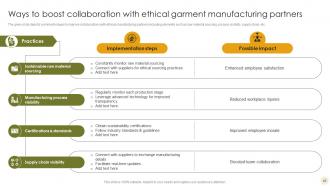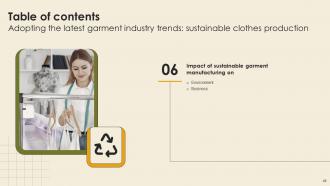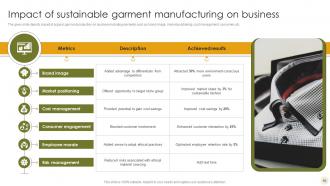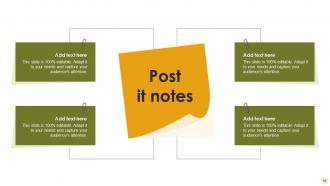Adopting The Latest Garment Industry Trends Sustainable Clothes Production Complete Deck
Grab our readily accessible and professionally crafted Adopting the Latest Garment Industry Trends Sustainable Clothes Production PowerPoint presentation. Explore a conscientious approach to crafting garments, delving into pioneering methods, materials, and strategies that minimize the ecological footprint. This presentation serves as a comprehensive manual, shedding light on crucial elements like ethical sourcing, circular design, integration of renewable energy, and effective waste reduction practices. Moreover, captivate your audience with visually striking slides on Textile manufacturing that illustrate sustainable clothing productions positive influence on the environment and society. Navigate through the entire supply chain, emphasizing responsible practices from extracting raw materials to creating the final product. Arm yourself with insights into the latest trends in sustainable fashion, fostering a mindful and knowledgeable approach to clothing manufacturing. Additionally, the Sustainable Development PPT templates present a comprehension of sustainable practices within the fashion industry, empower your team, and contribute to a more environmentally friendly future. This presentation serves as your compass for embracing and advocating for a future in clothing production that is both sustainable and ethical. Download this 100 percent editable and customizable PowerPoint, compatible with Google Slides, to streamline your presentation process.
Grab our readily accessible and professionally crafted Adopting the Latest Garment Industry Trends Sustainable Clothes Prod..
- Google Slides is a new FREE Presentation software from Google.
- All our content is 100% compatible with Google Slides.
- Just download our designs, and upload them to Google Slides and they will work automatically.
- Amaze your audience with SlideTeam and Google Slides.
-
Want Changes to This PPT Slide? Check out our Presentation Design Services
- WideScreen Aspect ratio is becoming a very popular format. When you download this product, the downloaded ZIP will contain this product in both standard and widescreen format.
-

- Some older products that we have may only be in standard format, but they can easily be converted to widescreen.
- To do this, please open the SlideTeam product in Powerpoint, and go to
- Design ( On the top bar) -> Page Setup -> and select "On-screen Show (16:9)” in the drop down for "Slides Sized for".
- The slide or theme will change to widescreen, and all graphics will adjust automatically. You can similarly convert our content to any other desired screen aspect ratio.
Compatible With Google Slides

Get This In WideScreen
You must be logged in to download this presentation.
PowerPoint presentation slides
Deliver this complete deck to your team members and other collaborators. Encompassed with stylized slides presenting various concepts, this Adopting The Latest Garment Industry Trends Sustainable Clothes Production Complete Deck is the best tool you can utilize. Personalize its content and graphics to make it unique and thought-provoking. All the sixty slides are editable and modifiable, so feel free to adjust them to your business setting. The font, color, and other components also come in an editable format making this PPT design the best choice for your next presentation. So, download now.
People who downloaded this PowerPoint presentation also viewed the following :
Content of this Powerpoint Presentation
Slide 1: This slide introduces Adopting the Latest Garment Industry Trends: Sustainable Clothes Production. State your company name and begin.
Slide 2: This is an Agenda slide. State your agendas here.
Slide 3: This slide shows Table of Content for the presentation.
Slide 4: This slide shows title for topics that are to be covered next in the template.
Slide 5: This slide depicts forecasted garment industry market size including compounded annual growth rate (CAGR), largest market and growing market by size, etc.
Slide 6: This slide displays the global market size of garment industry by region including elements such as growing market, Asia Pacific region, major reasons, fashion trends, etc.
Slide 7: This slide presents garment industry market segmentation assessment including material type, products, applications, household, technical, fashion, clothing, etc.
Slide 8: This slide showcases major garment industry players including PVH corporation, Initex, Kering S.A., LVHM, Aditya Birla Group, etc.
Slide 9: This slide displays market drivers boosting garment industry market size including elements such as awareness, willingness to pay, spending, natural fibers, etc.
Slide 10: This slide presents major challenges restricting growth of garment industry including elements such as wastage, trade limitations, fast fashion etc.
Slide 11: This slide illustrates various challenges in garment industry including elements such as health concerns, price fluctuations, global competition, labor issues, etc.
Slide 12: This slide showcases various growth opportunities in garments industry including elements such as smart textiles, e-commerce platforms, sustainable fashion etc.
Slide 13: This slide shows title for topics that are to be covered next in the template.
Slide 14: This slide depicts sustainability initiatives in textile industry including elements such as energy optimization, water saving, renewable electricity etc.
Slide 15: This slide presents various digital transformation trends in garment industry including elements such as cloud-based tools, data analytics, collaboration tools ,etc.
Slide 16: This slide depicts various technology trends in garment industry including elements such as digital twins, augmented reality, virtual reality, internet of things, etc.
Slide 17: This slide displays circular trend in garment industry including elements such as waste reduction, reselling, disposal, etc.
Slide 18: This slide presents transparency trends in supply chain within garment & textile industry including elements such as blockchain etc.
Slide 19: This slide depicts trends in global garment and fashion industry including elements such as nearshoring, reshoring & localization, etc.
Slide 20: This slide presents various AI trends in textile & garment industry including elements such as designing, production planning, computer vision etc.
Slide 21: This slide depicts various smart textile trend including elements such as smart garments, functional clothing, next gen textiles, etc.
Slide 22: This slide explains how robotics assists in textile & garment industry including elements such as sewing, automated cutting, AI-enabled factories, etc.
Slide 23: This slide depicts various 3D fabric printing trends in garment industry including elements such as versatility, innovation, motion activated, etc.
Slide 24: This slide shows title for topics that are to be covered next in the template.
Slide 25: This slide depicts adverse consequences of non-sustainable garment manufacturing practices, including carbon emissions, landfills, water, microplastic waste, etc.
Slide 26: This slide presents sustainable fashion industry growth statistics including elements such as projected market size, CAGR, sales growth rate, additional jobs, etc.
Slide 27: This slide depicts key stats associated with sustainable garment industry demographics including elements such as men age, decline in fast fashion sales etc.
Slide 28: This slide shows title for topics that are to be covered next in the template.
Slide 29: This slide depicts current sustainability assessment of business including elements such as energy consumption, water usage, waste generation, carbon emission etc.
Slide 30: This slide presents impact of poor sustainability practices on environment including elements such as cutting, sewing operations, dyeing, finishing etc.
Slide 31: This slide shows title for topics that are to be covered next in the template.
Slide 32: This slide depicts smart goals for sustainable garment business including elements such as reduce energy consumption, water usage, low waste generation etc.
Slide 33: This slide illustrates roles & responsibilities of sustainable business team including elements such as manager, environmental specialist etc.
Slide 34: This slide depicts training program for sustainable garment business including elements such as target audience, delivery methods, frequency, energy conservation, etc.
Slide 35: This slide presents some ethical material sourcing practices including elements such as fabric, trims, packaging, digital labeling, threading, sewing etc.
Slide 36: This slide shows title for topics that are to be covered next in the template.
Slide 37: This slide depicts some practices for energy efficiency including elements such as improved lighting systems, energy-efficient machinery, regular maintenance etc.
Slide 38: This slide displays some water conservation practices including elements such as recycling systems, fabric dyeing process, rainwater harvesting, leak detection, etc.
Slide 39: This slide presents various waste reduction techniques for garment industry including elements such as recycling programs, sustainable packaging, organic waste, etc.
Slide 40: This slide depicts ethical labor practices in sustainable garment industry including, fair wages, safe working conditions, no discrimination, employee health etc.
Slide 41: This slide presents some green certifications for garment industry including global organic textile standards, fair trade, bluesign, labor standards etc.
Slide 42: This slide depicts how transparency will promote sustainability in garment industry including elements such as raw material sourcing, manufacturing & supply chain visibility etc.
Slide 43: This slide presents some techniques to improve collaborations with ethical manufacturing partners including elements such as raw material sourcing, process visibility etc.
Slide 44: This slide depicts role of marketing in sustainable garment business including product messaging, transparency, collaborative partnerships, educational content, etc.
Slide 45: This slide presents continuous monitoring & evaluation of sustainable garment manufacturing including supply chain tracking, environmental impact etc.
Slide 46: This slide shows title for topics that are to be covered next in the template.
Slide 47: This slide depicts budget plan for sustainable garment production process including elements such as raw material sourcing, manufacturing, certification etc.
Slide 48: This slide shows title for topics that are to be covered next in the template.
Slide 49: This slide depicts impact of organic garment manufacturing on environment, including energy consumption, water usage, waste generation etc.
Slide 50: This slide presents impact of organic garment production on business including elements such as brand image, market positioning, cost management, consumer, etc.
Slide 51: This slide shows title for topics that are to be covered next in the template.
Slide 52: This slide depicts manufacturing performance of textile business including KPIs such as downtime, right first time, efficiency, quality, man-to-machine ratio, etc.
Slide 53: This slide displays impact of sustainable garment production including elements such as organic material sourcing, transportation, retail etc.
Slide 54: This slide shows all the icons included in the presentation.
Slide 55: This slide is titled as Additional Slides for moving forward.
Slide 56: This slide describes Line chart with two products comparison.
Slide 57: This is a financial slide. Show your finance related stuff here.
Slide 58: This slide shows Post It Notes for reminders and deadlines. Post your important notes here.
Slide 59: This slide provides 30 60 90 Days Plan with text boxes.
Slide 60: This is a Thank You slide with address, contact numbers and email address.
Adopting The Latest Garment Industry Trends Sustainable Clothes Production Complete Deck with all 69 slides:
Use our Adopting The Latest Garment Industry Trends Sustainable Clothes Production Complete Deck to effectively help you save your valuable time. They are readymade to fit into any presentation structure.
-
SlideTeam is my one-stop solution for all the presentation needs. Their templates have beautiful designs that are worth every penny!
-
I'm happy to discover your PowerPoint presentations and templates. They met my expectations precisely. Very innovative!


